- Skip to main content
- Keyboard shortcuts for audio player

Book Reviews
'the candy house' is a brilliant portrait of intersecting lives.
Annalisa Quinn

I drew a character map while reading Jennifer Egan's The Candy House , just for the pleasure of charting the swooping, kaleidoscopic intersections of parents and children (and cousins and tennis partners and drug dealers) of a central set of people first introduced in her 2010 novel A Visit from the Goon Squad .
Mapping people in relation to each other is one of the central activities of characters in these novels — anthropologists, publicists, anxious high schoolers, or employees of social media companies all seem to be asking, What makes people matter to each other? And can you predict or control it, either for love or for profit?
A Visit from the Goon Squad first introduced Mindy, a beautiful 23-year-old anthropology student on safari with the much older record executive Lou Kline and some of his family and hangers-on. In her narration of the safari, she breaks down the group's reactions to her presence with deadpan, diagnostic precision: The "Structural Hatred" of an older woman "who wears high-collared shirts to conceal the already thready sinews of her neck" for an older man's younger girlfriend; or the "Structural Affection," of that man's young son, who "hasn't yet learned to separate his father's loves and desires from his own."

Author Interviews
Jennifer egan does avant-garde fiction — old school.
In The Candy House , Mindy has become Miranda Kline, a reclusive, brilliant anthropologist who after years living among a remote tribe in Brazil developed algorithms predicting "patterns of affinity," that is, "what made people like and trust one another."
To the dismay of Miranda (MK to her tech bro disciples), these algorithms have been weaponized by social media companies — especially Mandala, a company led by Bix Boulton, a minor Goon Squad character, reborn as the mononymous social media mogul "Bix." His biggest innovation is a product called "Own Your Unconscious," which allows you to externalize your mind and revisit your past whenever you want.
But it is one of the "ancillary features" of "Own Your Unconscious" that has upended society in The Candy House . The "Collective Consciousness" works like this: "By uploading all or part of your externalized memory to an online 'collective,' you gained proportionate access to the anonymous thoughts and memories of everyone in the world, living or dead, who had done the same."
(Sidenote: These fictional products raise obvious and enormous questions about truth and subjectivity in memory, not to mention the brain itself — would watching your past be like a movie? Does your brain retain all the details of everything you've ever seen? Do different people remember the past differently, and if so, which versions are "true"? Hilariously, Egan bypasses these questions entirely and unapologetically.)
These two linked technologies are both inconceivably invasive and basically familiar — our phones are in certain ways already our externalized consciousnesses (philosophers talk about "extended mind theory" — that our cognitive processes increasingly happen externally as well as internally), and the Collective is a kind of exponential internet. The phrase "the candy house" (as in Hansel and Gretel) refers to the (also deeply familiar) Faustian bargain of convenience and connection for loss of privacy.
Egan makes the appeal of the Collective Conscious extravagantly obvious: In addition to the clear benefits (victims of child abuse being able to identify their abusers, missing people easily located), there is eternal appeal of entering someone else's consciousness, a longing threading through human culture from the myth of Tiraseus to the terrible teen movie Freaky Friday to the project of fiction itself.
Mandala's inventions feel especially poignant in Egan's fictional worlds, which are so densely populated by addicts and alcoholics. These are people who don't own their pasts, in either the sense of literally remembering them, or in the sense of feeling any agency in the events of their lives. So often her characters are unable to understand or accept what happened, those crucial, ill-understood moments when everything went awry. Far from being cartoonishly evil, an obvious wrong, "Own Your Unconscious" has deep instinctive appeal. This is characteristic of Egan, who isn't interested in moral problems with obvious answers.
In The Candy House , there is a persistent, lovely countermelody to the corporate project of mapping human experience and using it to predict what people will think and buy. The novel is full of people engaged in a kind of sweeter and more plaintive human algebra. I haven't recently read a gentler or funnier description of longing than in one chapter here in which a "senior empiricist and metrics expert" named Lincoln tries to determine what will make his crush, "M", fall in love with him.
Lincoln (also a Goon Squad character) has already analyzed the roots of M's charm (including "four primary freckles on her nose and approximately twenty-four secondary freckles"), and evaluated the competition (of which "fully half possess at least one possibly-to-likely-disqualifying personal trait"). But what remains elusive is " x: the unknown value required to secure M's love. " Maybe x is a stuffed hippo, or a music box, or "some really long tulips that are actually made of silk." He begins accumulating items.
Lincoln's is perhaps the most literal attempt to predict and control patterns of behavior, but so many characters are engaged in it in one form or another, like Molly, a lonely teenager at a country club trying to identify the elusive quality of cool , which she lacks: "...if you're nice to everyone, then why should people near you feel special and why should people NOT near you WANT to be near you, and why should anyone assume that the Times they are having without you are worse than the Times they would be having with you?"
Another character is working to "algebraize" storytelling, identifying and separating stock elements of a story so that, presumably, they can be assembled without human help: "stockblocks" include " Funny Best Friend Gets Serious to Talk Sense into Protagonist ," " Blurred Faces Lean Over Protagonist, Gradually Sharpening ," " Makeover Montage Followed by Gaping Reaction Shots ," etc.
It's parody, of course, but Egan doesn't discount the power of stockblocks either. Her last chapter is a sepia-tinted description of a young boy's unlikely game-winning homerun, seemingly assembled of the most stock of stock elements ( bases loaded , homerun from underdog, crowd goes wild, proud father claps shoulder ). This is an author endlessly capable of experimentation (Egan shocked readers in 2010 with a chapter written as a PowerPoint presentation, quaint as it might sound now). But ending on something so straightforwardly conventional — so formulaic — feels not like a copout but rather like a winking flex, a master pianist infusing unexpected feeling into Chopsticks. It is moving, somehow, both despite and because of its familiarity.
Besides, while chopping stories up into tiny moveable parts sounds like something out of a tech dystopia, folklorists have been doing it for centuries. (In the "Aarne and Thompson Type Index" classification of folk tale elements, the first iteration of which was published in 1910, the Hansel and Gretel formula is "ATU Tale Type 327A"). We tell the same stories again and again; the beauty lies in the details.
It calls to mind something Lincoln, the "senior empiricist and metrics expert" notes, in defense of his attempts to organize the world into comprehensible categories and patterns. Quantifiability, he thinks, "doesn't make human life any less remarkable, or even (this is counterintuitive, I know) less mysterious — any more than identifying the rhyme scheme in a poem devalues the poem itself."
clock This article was published more than 2 years ago
Jennifer Egan’s ‘The Candy House’ revisits the goon squad

Even in an era of boundless hype, Jennifer Egan’s “The Candy House” has a legitimate claim on the title of Most Anticipated Book of the Year.
This is, after all, a sequel to “A Visit From the Goon Squad,” Egan’s astonishing demonstration of literary bravado that swung through 2010, grabbing a Pulitzer Prize, a Los Angeles Times Book Prize and a National Book Critics Circle Award. The Washington Post named “Goon Squad” one of the best books of 2010 , and, later, other publications called it one of the greatest novels of the decade.
Egan’s creativity was so magnificent that commentators focused not on the storyline of “Goon Squad” but its multifarious forms, her confident array of perspectives — first, second and third — ranging through time and around the world, crescendoing with a 70-page PowerPoint presentation! It was a novel of such peacocking swagger that only its knockout triumph saved it from looking obnoxious.
Well, here we are more than a decade later, and even if you were a fan — as I was — the intervening years are likely to have beaten those characters from your memory. As someone in that earlier novel observed, “Time’s a goon,” and unfortunately, Egan is in no mood to help out, which means you’re likely to be as baffled as dazzled by “The Candy House.”
Sign up for the Book World newsletter
The music that ran through “Goon Squad” and gave the novel its melody is far harder to hear in these new chapters. Also, 12 years later, readers are less likely to be awed by literary experimentation. A chapter of tweets earns no ♥ now. A second-person narrator? You shouldn’t have.
But if “The Candy House” is less uniformly successful than “A Visit From the Goon Squad,” it still contains terrific parts. The opening story reintroduces us to Bix Bouton, now a tech mogul whose social media company has made him very rich. Exploiting the discoveries of an anthropologist named Miranda Kline, Bix monetized “algorithms that explained trust and influence” to build a “luminous sphere of interconnection.” Now, in his early 40s, despite his fame and vast wealth, Bix worries that he has “no vision beyond the one he’d nearly exhausted.” It’s a fear that gives him “a haunted, hunted feeling” as he struggles to divine “what should happen next.”
We eventually learn that Bix went on to invent a program with the ironic name Own Your Unconscious, which completely reshaped human culture. Egan explains: “By uploading all or part of your externalized memory to an online ‘collective,’ you gained proportionate access to the anonymous thoughts and memories of everyone in the world, living or dead, who had done the same.” It’s a clever parody of the Faustian bargain we’ve made with social media, relinquishing our privacy for access to the comments, likes and images of others. “The Candy House” ties this sci-fi brain technology back to Napster, that revolutionary — largely illegal — peer-to-peer file-sharing platform that let people share their song files and their most intimate musical tastes with everyone.
10 noteworthy books for March
“Who,” Egan asks, “could resist gaining access to the Collective Consciousness for the small price of making our own anonymously searchable?” In the world she imagines, most people sit down for a painless mind-dump on their 21st birthday, “never fully reckoning, in our excitement over our revelatory new freedom, with what we surrendered by sharing the entirety of our perceptions to the Internet.” It’s the candy house from Grimms’ fairy tales: the sweet, free bounty that comes with a horrible, unforeseen cost.
That’s the last time we see much of Bix, which is a shame, because he’s a singularly fascinating character. Making him a Black man was an interesting element of “Goon Squad,” but it’s one that Egan seems uninterested in pursuing. What, after all, might America be like if our all-pervasive social media were shaped by the dreams of an African American? Much of “The Candy House” takes place in a future influenced by Bix’s revolution, but the novel rarely contends with the implications of that premise for Bix’s life, the tech industry or the world shaped by it. Instead, Bix’s skin color remains about as relevant as his hair color.
Partly, this is simply a matter of the book’s structure, which insists on constantly fracturing and abandoning its forms, themes and characters. But as other chapters leap to other lives, we see people who do resist the Web’s mind-absorbing candy. Alfred Hollander, for instance, is so desperate for authenticity that he randomly screams just to discombobulate passing strangers for a moment. There’s also a whole cadre of “eluders.” They’re “separatists bent upon hoarding their memories and keeping their secrets.” And radicals who can afford it hire fiction writers to impersonate them on the Web so that they can live outside this sphere of supposedly benevolent surveillance.
Two authors expose the deceptive, self-aggrandizing absurdity of online life
Miranda Kline, the anthropologist whose research on affinity and trust laid the foundations for Bix’s social media revolution, may be one of those mysterious radicals. In a chapter narrated in the plural first person, one of Kline’s daughters explains, “The omniscience of the Collective Consciousness is what the eluders want to escape so desperately that they’re willing to leave their identities behind. Some liken eluders to trapped animals gnawing off their own legs as the price of freedom.”
While “Goon Squad” gave readers the celebrated PowerPoint chapter, “The Candy House” offers a spy thriller conveyed in aphorisms tweeted in the second person. A decade ago, Egan actually posted this whole thing on Twitter, and then she published it in the New Yorker . The chapter contains such observations as, “The fact that you feel like you’re dying doesn’t mean that you will die,” which reassured me during some particularly frustrating sections of this book.
Somewhat more effective is a chapter constructed from a great thicket of nested email conversations. But here again Egan presumes a lot on her readers’ ability to know what she’s talking about. It would have taken so little additional information to make this more inviting that I can’t help feeling the author was overindulged by her editor.
In ‘Manhattan Beach,’ Jennifer Egan’s heroine dives deep for family secrets
The chapters that work best embrace their radical forms more gently — or even mock them. One of the best is about Chris, the adult son of Bennie Salazar, the music producer who served as the axle of “Goon Squad.” Now an adult, Chris works at a shadowy software company trying to translate every element of every story into a mathematical formula. Through a series of awkward encounters, Chris falls into a cerebral comedy of absurdity in which he realizes that he has shifted from being the Protagonist to being an Enabling Sidekick : i < (a, b, c . . . ) . It’s a witty deconstruction of the presumptions of algorithmic insight and a brilliant demonstration of the unquantifiable pleasures of great fiction.
Toward the end of “The Candy House,” we come back to Bix’s 28-year-old son, who rejected his father’s work and wealth. He’s a struggling fiction writer who knows that we don’t need some new development of social media to access each other’s minds. We already have these ancient things called books that allow us to feel “the collective without any machinery at all.”
Ron Charles writes about books for The Washington Post.
The Candy House
By Jennifer Egan
Scribner. 334 pp. $28
We are a participant in the Amazon Services LLC Associates Program, an affiliate advertising program designed to provide a means for us to earn fees by linking to Amazon.com and affiliated sites.


In The Candy House, Jennifer Egan delivers an inventive novel for a digital age
Associate Professor of Creative Writing, University of Technology Sydney
Disclosure statement
Anthony Macris does not work for, consult, own shares in or receive funding from any company or organisation that would benefit from this article, and has disclosed no relevant affiliations beyond their academic appointment.
University of Technology Sydney provides funding as a founding partner of The Conversation AU.
View all partners
In her typically inventive fashion, Jennifer Egan calls The Candy House , the follow-up to her Pulitzer Prize winner A Visit from the Goon Squad (2011), a “sibling novel”.
Is this new book smarter, better-looking, more charismatic than its older sister or brother? I don’t think it is a question worth posing: it’s easy to love these two fascinating children just the same.
Review: The Candy House – Jennifer Egan (Corsair)
According to Egan, The Candy House
follows a number of [A Visit from the Goon Squad’s] peripheral characters into their own futures and pasts to create an independent work with a new set of preoccupations and center of gravity, but equal affinity for technology, humor, and structural freedom.
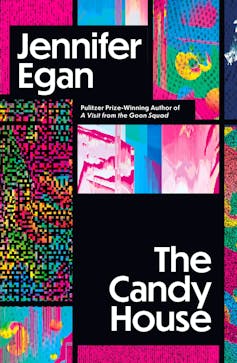
In this bustling, multifaceted report on contemporary consciousness, Egan more than delivers on her claims. In particular, she shows herself to be both shrewd and adept at assembling the right characters to develop her themes. She opens a window not just to the America that is, but the America that may very well come to be.
Among the novel’s teeming ensemble of players is Bix Bouton, tech entrepreneur and helmsman of Mandala, the company he has formed to realise his vision of the next quantum leap in social media and virtual reality. Mandala’s flagship products include Own Your Unconscious and The Collective Unconscious, programs that allow people to upload the content of their minds, which can then be shared on a global online platform that allows subscribers to relive memories and experiences.
Then there is the reclusive Miranda Kline, the late-blooming anthropologist whose research on “affinity and trust”, based on her study of a Brazilian tribe, is appropriated to drive Mandala’s social media revolution, in a way that is the perverse opposite of her intention.
There are also characters we might call quantifiers, for want of a better term.
One is Lincoln, a “senior empiricist and metrics expert”, whose world view has become so dominated by quantification that he subjects his courtship of a female co-worker to an ongoing analysis that involves units of attractiveness and odds of success in relation to his rivals.
Another is Chris Salazar, who works for a start-up entertainment company that is attempting, in a tradition stretching back to the Russian Formalists , to reduce movie storytelling to standardised elements – stockblocks – which he converts into algebraic equations.
At first blush, it would appear the main concern of The Candy House is digital technology. But such a narrow term does a disservice to Egan’s nuanced treatment of the theme.
Sure, the novel brims with characters and through-lines (I hesitate to call them storylines) that bear witness to the rise of the internet since the 1990s. One example is the reaction of a music mogul to the long-forgotten Napster , the free music-sharing platform. Unsurprisingly, he is horrified at what it will do to his bottom line.
What interests Egan is not technology for its own sake, but how it has transformed human experience at both the individual and social level. In particular, she is concerned with how we struggle to find our place in the world, and form and maintain meaningful relationships with others.
Read more: What my students taught me about reading: old books hold new insights for the digital generation
No neat arcs, no pat lessons
In the tradition of the realist novels of the 19th century, the cast of The Candy House is wide and varied. The way Egan deploys her cast, however, does not conform to the two dominant patterns we are familiar with: the hero narrative, where a single character provides a framing narrative arc that pulls the whole together, and the standard ensemble cast, where we see a several main characters, of more or less equal dramatic importance, affecting each other’s lives.
Egan disrupts the associated conventions: there are no neat character arcs to resolve, no pat lessons to be learned. Rather, she creates a finely woven mesh of resonant experiences – some epiphanic, some wryly comical – exchanged between people variously connected: by work, by sexual attraction, by chance, and above all by family.
Family ties are everywhere in The Candy House. Egan’s emotional worlds are peopled by fathers trying to connect with their children, wives wrangling their troublesome spouses, individuals trying to recalibrate their identities to some workable setting in relation to their wildly unpredictable siblings.
But in spite of all the angst (or maybe because of it), there are sections of great emotional beauty throughout the novel.
The chapter titled “The Mystery of our Mother” is a minor tour de force of family dysfunction and tenderness. In it, a divorce is narrated from the point of view of one of the daughters in the second-person plural. The use of “we” and “our” pronouns creates a rich, multidimensional, siblings-as-collective perspective.
The chapter “The Perimeter: After”, narrated in the first-person by a young teenage girl named Molly, conjures a transformative late afternoon in the life of Molly and her teenage friends (including a couple of boys). In one poignant scene, they fall asleep on a pier near their parents’ country club. It is a transcendent moment charged with the complexities of friendship and attraction, yet full of innocence and restraint.
Read more: Review: Satin Island by Tom McCarthy
High modernism and the 21st century postmodern
Much will be made of The Candy House’s formal innovations. Like A Visit from the Goon Squad, the novel relies on a grammar of what we could call the 21st-century postmodern. It makes use of standard novelistic tropes like pastiche, fractured time and metafiction , mediated by the more recent narrative possibilities of the digital age.
Thus in The Candy House we see the usual mixture of high and low (the speculative fiction of Own Your Unconscious contrasting with the “literary” modes of the lyrical and epiphanic), discontinuous narrative (the novel’s time progression is non-linear, influenced in part by digital temporalities), and variations of text types (a chapter in emails, a chapter in interior monologue lite, a chapter in stylishly oblique aphorisms reminiscent of Renata Adler that originated as tweets, and so on).
But it is clear that Egan is also calling in an older tradition of literary innovation: postmodernism’s domineering big brother, high modernism.
James Joyce’s Ulysses (1922) is name-checked at two telling points: in the beginning, where we learn that Bix Bouton “kept Ulysses as a romantic artefact”, and towards the end, where it is revealed that Bix once showed his son Gregory, a creative writing masters graduate, his crumbling copy of Joyce’s novel to convince his son of his “literary seriousness”.
Read more: James Joyce's Ulysses is an anti-stream of consciousness novel
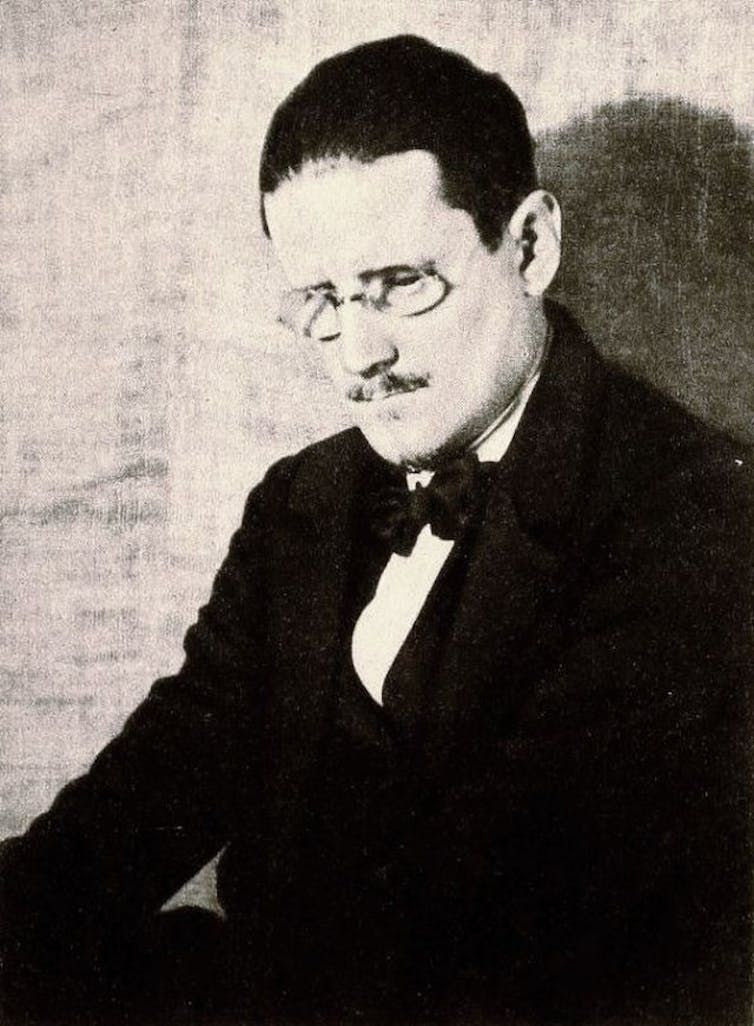
There is calculated ambiguity in Egan’s referencing of Joyce, but it is hard not think that she’s aligning herself with the spirit of the high modernists.
It is a risky move to associate yourself with a text as canonical as Ulysses, but I think it is justified. The Candy House’s inventiveness points a way forward for the novel as a genre. It suggests how the novel can be made new again – not just formally, but in its depiction of human existence in a technologically mediated world.
In Ulysses, Leopold Bloom is, like the wandering Odysseus, on a journey home. Egan’s novel has no single hero, no underlying epic narrative that links it to a greater history, and home seems very hard to find. Her characters and the world in which their struggles and triumphs occur seem to have been decoupled from history. They are set adrift on a vast sea that is one part memory, one part sensation. They live suspended between the virtual and the material, with neither gaining ascendancy.
Yet for all the unstable ontologies and splintered subjectivities that Egan captures so well, her sensibility manages to evoke a great sense of vitality and energy. In Egan’s universe, people never stop trying to love, to learn, to help, to discover, to seek joy and wonder.
I finished reading The Candy House feeling apprehensive about the pitfalls and dangers of the world we have unleashed, but excited that I was caught up in some great, exhilarating adventure that is at the very core of what it means to be human.
- Book reviews
- American literature

Communications and Events Officer

Lecturer (Hindi-Urdu)

Director, Defence and Security

Opportunities with the new CIEHF

School of Social Sciences – Public Policy and International Relations opportunities
- Life & Culture
Jennifer Egan’s ‘The Candy House’ full of surprises
- Colette Bancroft Times staff
When Jennifer Egan’s novel A Visit From the Goon Squad was published in 2010, it was a sensation, sweeping up a basketful of awards and winning praise for its experimental structure, sparking prose and intriguing visions of the future.
Egan has described her new novel, The Candy House , as a “sibling novel” to Goon Squad — terms like sequel and prequel don’t quite work for two books that bend time and characters like these do.
You don’t have to read Goon Squad first, although why wouldn’t you — it’s a delight. But The Candy House does pick up many of the earlier book’s characters and expand their stories into the present, past and future.
It also deploys the same structural experimentation as Goon Squad . Each chapter focuses on a different character and tells a complete story, but those chapters are interlinked, often in surprising ways.
When I read Goon Squad , I marveled that those compact chapters each conveyed as much as many full-length novels do, and that their characters were so vivid I wanted to know more about them. The Candy House grants that wish.
The first chapter of The Candy House brings back Bix Bouton, who was a grad student in 1992 in Goon Squad . Even then he felt drawn to the nascent internet: “Bix could feel the vibrations of an invisible web of connection forcing its way through the familiar world like cracks riddling a windshield. Life as they knew it would soon shatter and be swept away, at which point everyone would rise together into a new metaphysical sphere.”
OK, so he got that last bit wrong, but Bix is a tech visionary. In The Candy House he is a billionaire, the inventor of Own Your Unconscious, a platform that allows people to easily download all their memories into a digital storage cube — and to anonymously upload those memories to the cloud in exchange for access to everyone else’s. It’s a world-changer, and Bix is a powerful celebrity, sort of like Mark Zuckerberg except he’s Black and lives in New York and people think he’s cool instead of evil.
Bix’s story links us to Miranda Kline, an anthropologist whose work among Amazon (the river, not the retailer) villagers resulted in an influential book called Patterns of Affinity , which inspired Bix to create Own Your Unconscious, which Miranda vehemently opposes. She’s become part of a growing group called eluders, an “invisible army of data defiers.” Many of them hire people called proxies (often underemployed fiction writers) to keep their social media accounts alive so their friends and family don’t realize they’ve bailed from the grid.
Miranda has eluded so well that her two adult daughters aren’t sure whether she’s alive. Those daughters are the result of Miranda’s marriage to music producer Lou Kline, a central figure in Goon Squad . Charismatic and chaotic, he’s left behind a trail of ex-wives and of children longing for his love.
Planning your weekend?
Subscribe to our free Top 5 things to do newsletter
You’re all signed up!
Want more of our free, weekly newsletters in your inbox? Let’s get started.
Miranda’s daughters, speaking in first person plural, narrate an achingly lovely chapter about their childhood. As young adults, they grow close to Lou and are there the day an assistant shows him how Napster works. “I’m watching a tidal wave, he said. The complete annihilation of my business.”
When the music business implodes, Lou has a stroke, then another, and the daughters, Lana and Melora, become his caretakers. They also take over his business; Melora transforms it, and Lana becomes an eluder.
When Melora takes over Lou’s business, she works with his longtime protege, Bennie Salazar, who links to the story of his son, Chris Salazar, who’s working for another tech company called SweetSpot Networks. He was an English major in college, but now his job is the “algebraization” of narrative — reducing the stock elements (”stockblocks”) in movies and TV shows to mathematical formulas so they can readily be assembled into new entertainments.
Egan, of course, does her own experimentation with story forms. One stream-of-consciousness chapter from Molly, a childhood friend of Chris, recounts the agonies and ecstasies of a day in the life of a tween navigating the ruthless social hierarchy of a country club.
One of the girls she shares that day with is Lulu, who appeared in Goon Squad as an irresistibly charming kid. In a breathlessly tense chapter in The Candy House , she’s an adult, a spy on a perilous mission, which is narrated in second person as a series of directives, because her body has been equipped with gadgets that will, among other things, record her thoughts: “Never look for hidden cameras. The fact that you’re looking will give you away.”
In the aftermath of surviving that experience, Lulu goes looking for her real father, whom she believes to be a famous but reclusive movie star — a chapter narrated largely (and hilariously) in emails among two actors, their various assistants and Lulu’s mother, Dolly Peale, who in Goon Squad was a publicist whose assignment to put on a party for an African dictator went so spectacularly wrong that she has changed her name and become a gourmet grocer.
And those are just some of the story lines and characters Egan continues from Goon Squad . Sasha, the kleptomaniac of that book, is now a wildly successful artist. There’s the young man who hates fakeness so much he screams randomly in public just to evoke genuine responses from people; his golden-boy older brother who becomes a lawyer, then a drug addict, then a state senator (which may or may not be a redemption); the suburban mom who gets into a standoff with her neighbor over a fence line that leads to them standing all night, silent, by the fence.
Twelve years later, The Candy House brings less of the fizzy excitement of the experimentation in Goon Squad . But it’s just as rich in indelible characters, its plot as full of humor and heartbreak and insight about our brave new world, its prose just as beautifully crafted. Egan’s subtle attention to the distinctive voices of her many characters is remarkable.
The candy house of the title, a notion borrowed from fairy tales, alludes to many things that make us think we’re getting happiness for free: Own Your Unconscious, drug addiction, success, love.
Bennie Salazar says of a reunion recording by boomer musicians, “Tongue-in-cheek nostalgia is merely the portal, the candy house, if you will, through which we hope to lure in a new generation and bewitch them.”
It might not be free, but The Candy House is a bewitching read.
The Candy House
By Jennifer Egan
Scribner, 352 pages, $28
Copy Desk Chief and Books Critic
MORE FOR YOU
- Advertisement
ONLY AVAILABLE FOR SUBSCRIBERS
The Tampa Bay Times e-Newspaper is a digital replica of the printed paper seven days a week that is available to read on desktop, mobile, and our app for subscribers only. To enjoy the e-Newspaper every day, please subscribe.
Pulitzer Prize Winner Jennifer Egan’s The Candy House Considers How Technology Has Forever Changed Us
The author of A Visit from th e Goon Squad revisits characters from that novel in her dazzling latest.
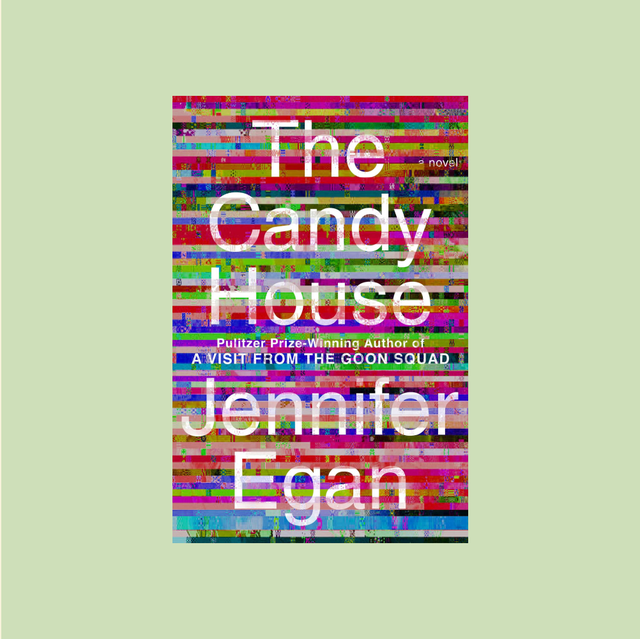
Our editors handpick the products that we feature. We may earn commission from the links on this page.
Fans of Jennifer Egan’s breakout hit and Pulitzer Prize-winning 2010 novel A Visit from the Goon Squad will be thrilled to know that its “sibling novel,” The Candy House , is here at last. The two books are connected loosely, like wildflowers sown in the same field. You’ll see kleptomaniac Sasha again, who has now transformed her criminality into art. You’ll cross paths with Sasha’s husband, Drew; her son, Lincoln, who falls somewhere on the autism spectrum; and her art history professor uncle, Ted. The music industry pros Bennie Salazar and Lou wander through as well, along with various of their respective children from several marriages. Like Goon Squad , The Candy House is a collage of interconnected characters and stories told in diverse forms that follow their own wayward paths. Egan’s prose is as lithe and knowing as ever, tender toward human folly, but highly aware of how flawed we all are.
However, just as the world itself has become darker and more contentious since 2010, the world of The Candy House is more sober than Goon Squad ’s rock and roll heart. Instead of zeroing in on the music business as its hub, The Candy House features the technology industry that now saturates every fiber of our lives. The difference between the two industries partly accounts for the different vibes of these sibling novels. The music biz may be crass, showy, and greedy, but it basically wants people to have a good time. The tech industry is greedy, too, but it wants to get not only into your wallet but also your head, sometimes quite literally.
In Egan’s version of our current, and future, reality, a tech genius named Bix Bouton has invented a product called “Own Your Unconscious,” which has found a way for people to revisit memories they’ve forgotten. As Lincoln, all grown up and deep in the employ of cutting-edge tech, puts it, “Who could resist the chance to revisit our memories, the majority of which we’d forgotten so completely that they seemed to belong to someone else? And having done that, who could resist gaining access to the Collective Consciousness for the small price of making our own anonymously searchable? We all went for it on our twenty-first birthday…just as prior generations went for music sharing and DNA analysis….”
What could possibly go wrong?
Jennifer Egan The Candy House
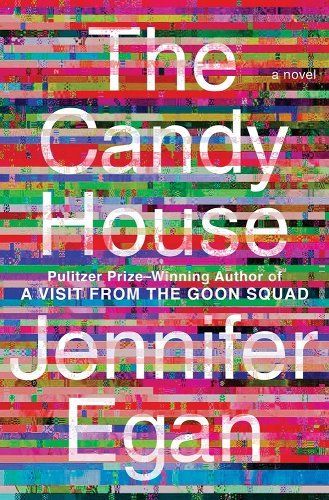
For others, however, that candy tastes an awful lot like poison, and they become “eluders,” or “data defiers” who go to great lengths to keep their identities, their memories, and their consciousnesses off the grid and out of the mathematical cloud that now hovers over us all, 24/7. It isn’t easy. They, too, have to employ advanced forms of technology such as “hermit crab programs” to escape the net. In a particularly sly moment, Egan reveals that some of these advanced programs employ actual people—fiction writers, apparently—“who impersonate multiple identities at once.” In the future, fiction writers may be most useful in releasing us from the continual surveillance and intrusion of technology by inventing identities that we can use as escape hatches.
Ha ha. Sort of. Egan is too skilled a writer, and too wise a human being to lurch through the usual paces of dystopic fiction. There is no war between the eluders and the counters, no analog hero who defies mighty tech and wins. Characters and their passions and discontents rise and fall as the world changes around and through them, sometimes deeply and specifically affected by Bix’s invention and sometimes…not. Or not in any straightforward way. For them, as for us, tech and history are simply the water in which they swim. Bix may have created an astonishing technology, but its effects are not in his control. Like the sorcerer’s apprentice, his powers end up exceeding his own, individual power.
In fact, though, Bix didn’t exactly create the technology all on his own, and it is here that Egan asks her deepest, least answerable questions. As the novel makes clear early on, Bix accidentally stumbled onto the work of an anthropologist named Miranda Kline (ex-wife of Lou) who wrote an influential book called Patterns of Affinity . This book, as her daughters later put it, included “formulas for predicting human inclinations.” Those formulas can also be called “algorithms,” and when Bix acquired these algorithms, he radically and forever changed human beings’ relationship to their own consciousness. As with the internet itself, there is no putting the genie back in the bottle. Miranda’s scholarly book and Bix’s tech invention combine to put something into the world that is very powerful, and very ambiguous, at best. These intellectual parents unintentionally create metaphysical offspring that live on without them, and beyond whatever either of their intentions may have been. Like Lincoln, Bix is a pretty nice guy—smart, loving, creative. Miranda is also smart, very intrepid, and brave. He gets very, very rich. She, along with one of her daughters, becomes an eluder. He dies, eventually, at a late age. So does she. Neither is punished, or rewarded, by the novel that contains them. They’re just people, doing their best.
If there are no entirely bad guys in The Candy House , there are no entirely good guys, either. As Bix’s technology rises and rises, and despite the credit he tries to give her for it, Miranda loudly and publicly defends “the deeply private nature of human experience,” but it’s too late. Privacy is so 20th century. She opened Pandora’s box, and, in a twist of fate she never could have foreseen, a really smart guy found a way to make it into an app that everyone wanted. Egan turns her utterly human characters this way and that, showing the threads that connect them and the choices that bind them, never losing sight of the fact that, like it or not, they are all part of the same vast tapestry. Pull one thread here, and another is affected over there, for better or worse. In the future, no matter their day jobs helping eluders, novelists may still be the ones who will remind us of this interconnectedness so movingly and beautifully, and as Egan does so well in these intricately woven pages.
Stacey D’Erasmo is the author of the novels Tea, A Seahorse Year, The Sky Below, Wonderland, and The Complicities, which is forthcoming from Algonquin in September.; and the nonfiction book The Art of Intimacy: The Space Between . She is a former Stegner Fellow in Fiction, the recipient of a 2009 Guggenheim Fellowship in Fiction, and the winner of an Outstanding Mid-Career Novelist Prize from the Lambda Literary Foundation. She is an associate professor of writing and publishing practices at Fordham University.
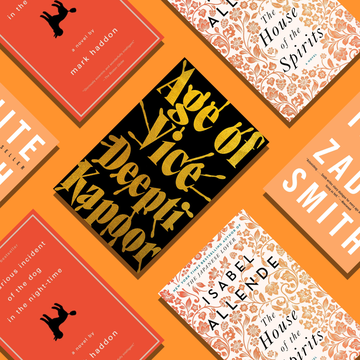
You Can Run, but You Can’t Hide

Lara Love Hardin’s Remarkable Journey

These New Novels Make the Perfect Backyard Reads

Books that Will Put You to Sleep

The Other Secret Life of Lara Love Hardin

The Best Quotes from Oprah’s 104th Book Club Pick
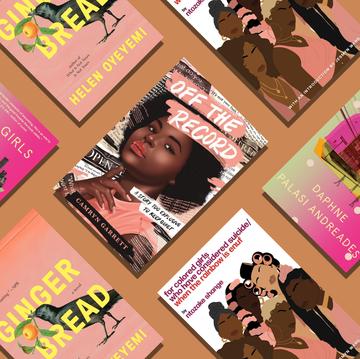
The Coming-of-Age Books Everyone Should Read

Pain Doesn’t Make Us Stronger

How One Sentence Can Save Your Life
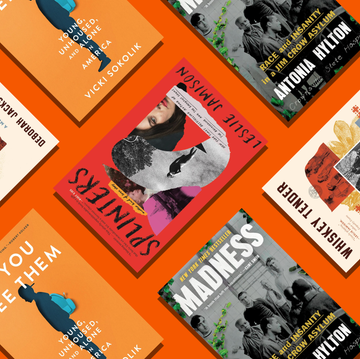
Riveting Nonfiction—and Memoirs!—You Need to Read

7 Feel-Good Novels We All Desperately Need
- Newsletters
- Account Activating this button will toggle the display of additional content Account Sign out
Jennifer Egan’s House of Wonders
Her radiant new novel explores what role the imagination can still play in a world overwhelmed by technology..
Slate has relationships with various online retailers. If you buy something through our links, Slate may earn an affiliate commission. We update links when possible, but note that deals can expire and all prices are subject to change. All prices were up to date at the time of publication.
There’s not a lot of filler in Jennifer Egan’s radiant new novel, The Candy House , a sequel of sorts to her 2010 Pulitzer-winning bestseller, A Visit From the Goon Squad . But one sentence in the new novel’s penultimate chapter does strike me as unnecessary. Recalling a character who’s struggling to complete a novel, an authorial voice-over drops in to explain that only fiction “lets us roam with absolute freedom through the human collective.” Paeans from a novelist to the unique powers of fiction do register as a bit self-serving, but the reason Egan doesn’t need to tell us this is because she’s spent the previous 13 chapters gloriously proving it.
Like Goon Squad , The Candy House comes together in pieces. Each chapter is told from a different perspective selected from a group of interconnected characters, many of whom also appear in Goon Squad (although you don’t need to remember them well to follow this one) . The novel is broken up in time, the earliest chapter being set (sort of) in 1965 and the latest in the 2030s. That “sort of” refers to the abiding presence in the novel of a new technology that enables people to export all their memories and upload them to an online repository, where (if their owner so chooses) others can view them too, along with the accompanying thoughts and feelings. The person who narrates the 1965 chapter, which describes how four young bankers leapt into the counterculture at a pot farm in the redwoods, is the daughter of one of the men. She’s witnessing a moment of liberation in her father’s life but also the beginning of the end of her parents’ suburban marriage.
The Collective Consciousness is the product of a company named Mandala, founded by Bix Bouton, the protagonist of the first chapter—a charismatic entrepreneur whose “genius lay in refining, compressing, and mass-producing, as a luscious, irresistible product, technology that already existed in crude form.” He’s a bit Mark Zuckerberg, a bit Steve Jobs, except Bix is Black, first drawn into the world of the internet by the belief that, when disembodied, “Black people would be delivered from the hatred that hemmed and stymied them in the physical world.” Bix’s first big idea—lifted from an obscure anthropology monograph containing algorithms that calculated how trust and influence formed in a Brazilian tribe—was a social media platform that made him rich and famous. Own Your Unconscious, his second breakthrough, was also lifted from an academic’s research and allows people to deposit a copy of their memory to a sexy bit of tech shaped like a luminous cube. The uploading and sharing part, called the Collective Consciousness, was more of an afterthought, but as is often the way with new tech, it soon became the main attraction.
Sign up for the Slate Culture Newsletter
The best of movies, TV, books, music, and more, delivered to your inbox.
Thanks for signing up! You can manage your newsletter subscriptions at any time.
If A Visit from the Goon Squad is about time and music, The Candy House is about experience and art, although the novel’s four sections (“Build,” “Break,” “Drop,” “Build”) refer back to the musical structures of Goon Squad . Egan isn’t especially interested in spinning out all the potential ramifications of the Collective Consciousness, which are considerable and bit distracting. One chapter mentions that “thousands of abusers have been convicted based on the evidence of their victims’ externalized memories, viewed as film in courtrooms,” leaving the wider impact on criminal justice, among other institutions, a tantalizing mystery. Instead, The Candy House contemplates what role the imagination could still play even when other people’s lives—and the forgotten periods in our own—have become easily and totally available.
One character, the junkie daughter of a music producer, uses the device to relive a dearly remembered trip to London she made with her dad at age 16, only to learn that he occasionally regretted bringing her along. “How could revisiting that time in its unfiltered state improve upon the story her memory has made?” she realizes. Not only is the notion of finding out exactly what other people think of you pretty terrifying, but the raw memories pose a threat to the stories we make of them afterward, stories that construct our lives.
This is an inversion of that much-used Joan Didion quote, “We tell ourselves stories in order to live,” which Didion meant as a pitiless observation of how we cloak the ephemera of experience in an illusion of meaning. Egan thinks otherwise, maintaining that “knowing everything is too much like knowing nothing; without a story, it’s all just information .” Forming it into a narrative is living (even if, as with Didion, the story you tell about yourself is that you’re a neurasthenic cynic above such consolations). Egan’s case in point is this novel, a collection of chapters about people figuring out who they are.
As in Goon Squad , Egan rifles through an assortment of fictional styles and motifs to tell these people’s stories. There’s a former boy wonder desperate for his next brainstorm, a teenage girl agonizing over her social status, a recovering drug addict whose attempted suicide provides another man with the chance to heal an old wound. One bravura chapter, reminiscent of the famous PowerPoint chapter in Goon Squad , is told in directives conveyed to an undercover agent through an implant in her brain. Best of all is a chapter consisting entirely of emails and texts exchanged by over a dozen characters. It begins with one woman seeking a private conversation with an aging movie star and spreads to nearly a dozen participants, each trading favors to get what he or she wants, a web of transactions that ultimately results in the joyous reunion of the Conduits, a rock band that appears in Goon Squad , and a documentary film.
All of this feels more at ease than Goon Squad , a novel I’d never thought of as betraying any strain until I read The Candy House . There was no pressing reason for the PowerPoint chapter in Goon Squad to be written in PowerPoint besides proving that Egan could do it, but the email/text chapter, titled “See Below,” could only be written in this form. The chapter is an illustration of how human connection works, facilitated by technology, yet not so different from the Brazilian tribe studied by anthropologist Miranda Kline, who is dismayed to see her monograph monetized by Bix into a surveillance platform disguised as a community. Witnessing all these differently motivated agendas gradually coalesce into a creative force is an exhilarating delight.
Technology, specifically the alluring Collective Consciousness, is the candy house of the novel’s title. That also includes art-stealing file-sharing platforms, denounced by Miranda Kline’s twin daughters, who take over their father’s music production company:
The Candy House
By Jennifer Egan. Scribner.
Nothing is free! Only children expect otherwise, even as myths and fairy tales warn us: Rumpelstiltskin, King Midas, Hansel and Gretel. Never trust a candy house! It was only a matter of time before someone made them pay for what they thought they were getting for free.
Never trust a candy house is also the advice of Miranda, who becomes an “eluder,” part of a movement of individuals who install a robotic proxy in their existing digital identity and then vanish into the offline world. One of their leaders, Chris Salazar, is the son of Bennie Salazar, a central character from Goon Squad . Chris calls his organization Mondrian, presumably in tribute to his grandmother, who kept an authentic Mondrian painting in a modest tract home so impossible to secure that no company would insure it. Her solution is to camouflage it by filling the house with Mondrian merch: “candleholders, vases, umbrellas, tea trays, glasses, place mats, towels, throw pillows, framed posters, coffee-table books, and a needlepoint footstool.” No one, she explains, with a legit Mondrian would “ever acquire such crap.”
Sometimes the best place to conceal the real is amid the fake, which could be the motto of fiction: the lie that tells a truth. Chris starts out working for company seeking to turn what it calls “stockblocks,” narrative components from movies (“Funny Best Friend Gets Serious to Talk Sense Into Protagonist”; “Crowd Rises to Its Feet in Unexpected Tribute”), into mathematical formulae, although to what end he can’t tell. Later we find him running Mondrian behind a nonprofit front that organizes Dungeons & Dragons games for recovering addicts. As a dungeon master, instead of dismantling stories, he makes them, collaboratively with others. In The Candy House, D&D represents one of several alternatives to the candy house of technology and information. Being made of imagination, it offers a portal to another universe, much like each of the chapters in Egan’s novel. Egan opens windows on entrancing new worlds, in which what happened depends on who’s telling the story. A candy house, on the other hand, is just a trap. You think you’re going to eat it, but it ends up eating you.
GPB Originals
Browse by genre, featured programs, featured programs & series, more gpb news, for kids & teachers, ghsa sports, high school football, browse by type, browse by category, for parents & caregivers, support gpb, gpb newsletter cta, banner image, section branding, header content, tagged as: .
- Book Reviews
'The Candy House' is a brilliant portrait of intersecting lives
April 6, 2022 6:33 AM
- Annalisa Quinn
Share this page
Primary content.
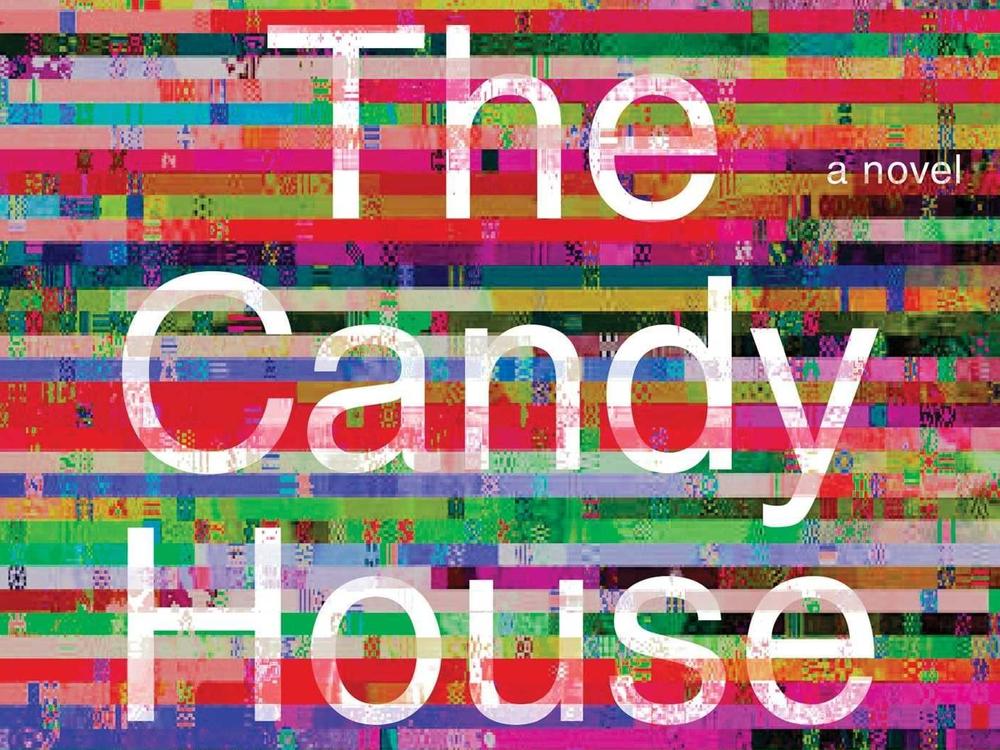
I drew a character map while reading Jennifer Egan's The Candy House , just for the pleasure of charting the swooping, kaleidoscopic intersections of parents and children (and cousins and tennis partners and drug dealers) of a central set of people first introduced in her 2010 novel A Visit from the Goon Squad .
Mapping people in relation to each other is one of the central activities of characters in these novels — anthropologists, publicists, anxious high schoolers, or employees of social media companies all seem to be asking, What makes people matter to each other? And can you predict or control it, either for love or for profit?
A Visit from the Goon Squad first introduced Mindy, a beautiful 23-year-old anthropology student on safari with the much older record executive Lou Kline and some of his family and hangers-on. In her narration of the safari, she breaks down the group's reactions to her presence with deadpan, diagnostic precision: The "Structural Hatred" of an older woman "who wears high-collared shirts to conceal the already thready sinews of her neck" for an older man's younger girlfriend; or the "Structural Affection," of that man's young son, who "hasn't yet learned to separate his father's loves and desires from his own."
In The Candy House , Mindy has become Miranda Kline, a reclusive, brilliant anthropologist who after years living among a remote tribe in Brazil developed algorithms predicting "patterns of affinity," that is, "what made people like and trust one another."
To the dismay of Miranda (MK to her tech bro disciples), these algorithms have been weaponized by social media companies — especially Mandala, a company led by Bix Boulton, a minor Goon Squad character, reborn as the mononymous social media mogul "Bix." His biggest innovation is a product called "Own Your Unconscious," which allows you to externalize your mind and revisit your past whenever you want.
But it is one of the "ancillary features" of "Own Your Unconscious" that has upended society in The Candy House . The "Collective Consciousness" works like this: "By uploading all or part of your externalized memory to an online 'collective,' you gained proportionate access to the anonymous thoughts and memories of everyone in the world, living or dead, who had done the same."
(Sidenote: These fictional products raise obvious and enormous questions about truth and subjectivity in memory, not to mention the brain itself — would watching your past be like a movie? Does your brain retain all the details of everything you've ever seen? Do different people remember the past differently, and if so, which versions are "true"? Hilariously, Egan bypasses these questions entirely and unapologetically.)
These two linked technologies are both inconceivably invasive and basically familiar — our phones are in certain ways already our externalized consciousnesses (philosophers talk about "extended mind theory" — that our cognitive processes increasingly happen externally as well as internally), and the Collective is a kind of exponential internet. The phrase "the candy house" (as in Hansel and Gretel) refers to the (also deeply familiar) Faustian bargain of convenience and connection for loss of privacy.
Egan makes the appeal of the Collective Conscious extravagantly obvious: In addition to the clear benefits (victims of child abuse being able to identify their abusers, missing people easily located), there is eternal appeal of entering someone else's consciousness, a longing threading through human culture from the myth of Tiraseus to the terrible teen movie Freaky Friday to the project of fiction itself.
Mandala's inventions feel especially poignant in Egan's fictional worlds, which are so densely populated by addicts and alcoholics. These are people who don't own their pasts, in either the sense of literally remembering them, or in the sense of feeling any agency in the events of their lives. So often her characters are unable to understand or accept what happened, those crucial, ill-understood moments when everything went awry. Far from being cartoonishly evil, an obvious wrong, "Own Your Unconscious" has deep instinctive appeal. This is characteristic of Egan, who isn't interested in moral problems with obvious answers.
In The Candy House , there is a persistent, lovely countermelody to the corporate project of mapping human experience and using it to predict what people will think and buy. The novel is full of people engaged in a kind of sweeter and more plaintive human algebra. I haven't recently read a gentler or funnier description of longing than in one chapter here in which a "senior empiricist and metrics expert" named Lincoln tries to determine what will make his crush, "M", fall in love with him.
Lincoln (also a Goon Squad character) has already analyzed the roots of M's charm (including "four primary freckles on her nose and approximately twenty-four secondary freckles"), and evaluated the competition (of which "fully half possess at least one possibly-to-likely-disqualifying personal trait"). But what remains elusive is " x: the unknown value required to secure M's love. " Maybe x is a stuffed hippo, or a music box, or "some really long tulips that are actually made of silk." He begins accumulating items.
Lincoln's is perhaps the most literal attempt to predict and control patterns of behavior, but so many characters are engaged in it in one form or another, like Molly, a lonely teenager at a country club trying to identify the elusive quality of cool , which she lacks: "...if you're nice to everyone, then why should people near you feel special and why should people NOT near you WANT to be near you, and why should anyone assume that the Times they are having without you are worse than the Times they would be having with you?"
Another character is working to "algebraize" storytelling, identifying and separating stock elements of a story so that, presumably, they can be assembled without human help: "stockblocks" include " Funny Best Friend Gets Serious to Talk Sense into Protagonist ," " Blurred Faces Lean Over Protagonist, Gradually Sharpening ," " Makeover Montage Followed by Gaping Reaction Shots ," etc.
It's parody, of course, but Egan doesn't discount the power of stockblocks either. Her last chapter is a sepia-tinted description of a young boy's unlikely game-winning homerun, seemingly assembled of the most stock of stock elements ( bases loaded , homerun from underdog, crowd goes wild, proud father claps shoulder ). This is an author endlessly capable of experimentation (Egan shocked readers in 2010 with a chapter written as a PowerPoint presentation, quaint as it might sound now). But ending on something so straightforwardly conventional — so formulaic — feels not like a copout but rather like a winking flex, a master pianist infusing unexpected feeling into Chopsticks. It is moving, somehow, both despite and because of its familiarity.
Besides, while chopping stories up into tiny moveable parts sounds like something out of a tech dystopia, folklorists have been doing it for centuries. (In the "Aarne and Thompson Type Index" classification of folk tale elements, the first iteration of which was published in 1910, the Hansel and Gretel formula is "ATU Tale Type 327A"). We tell the same stories again and again; the beauty lies in the details.
It calls to mind something Lincoln, the "senior empiricist and metrics expert" notes, in defense of his attempts to organize the world into comprehensible categories and patterns. Quantifiability, he thinks, "doesn't make human life any less remarkable, or even (this is counterintuitive, I know) less mysterious — any more than identifying the rhyme scheme in a poem devalues the poem itself."
Copyright 2022 NPR. To see more, visit https://www.npr.org .
Bottom Content
Related news.

'There's Always This Year' reflects on how we consider others — and ourselves
Hanif Abdurraqib's latest book is about hoops, sure, but it's also about so much more. It's another remarkable book from one of the country's smartest cultural critics.
- Michael Schaub
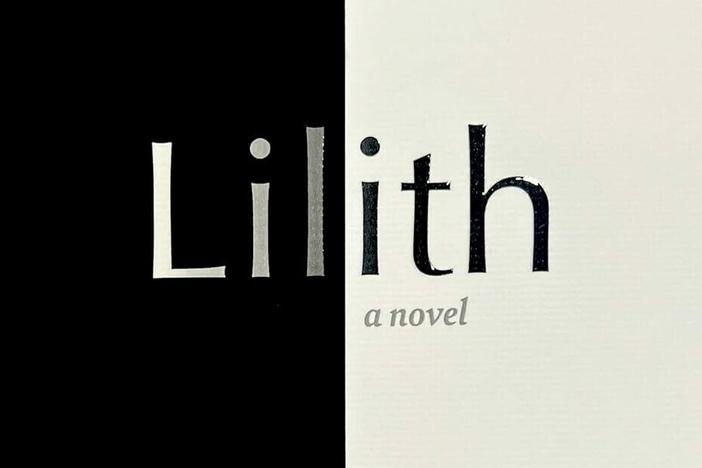
'Lilith' cuts to the heart of the gun debate and school shootings
Eric Rickstad's novel is full of sadness and rage; it forces readers to look at one of the ugliest parts of U.S. culture, a too-common occurrence that is extremely rare in other countries.
- Gabino Iglesias
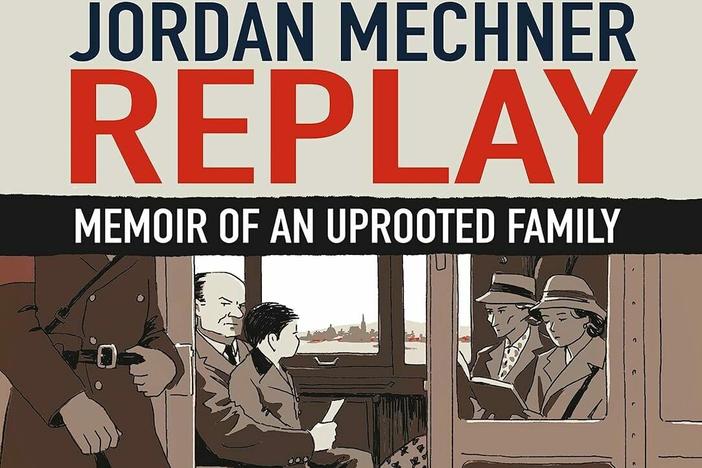
'Replay' spotlights resilience, loss, and intergenerational connectedness
Jordan Mechner is known for his video games. But here he brings to life the many twists and turns that underscore the pervasive impact of the past — and the connectedness that remains in the present.
- Tahneer Oksman

Support Quality Journalism
GPB is committed to bringing you comprehensive news coverage from Georgia, across the country and around the world. Your support makes this possible. Please consider making a gift today to support this vital public service.
Consciousness raising in Jennifer Egan’s ‘The Candy House’
What if technology could connect all the minds that ever thought.
/cloudfront-us-east-1.images.arcpublishing.com/bostonglobe/DOFIDP7Q6RECRN34BHQQSR7XXU.jpg)
Jennifer Egan’s new book, “ The Candy House ,” which she’s called a “sibling novel” to her Pulitzer Prize-winning “ A Visit From the Goon Squad ,” is a dizzying and dazzling work that should end up on many Best of the Year lists. Even more structurally experimental than its predecessor, the novel unfolds from a slew of perspectives and in a wide range of styles as it ruminates on the allure and perils of technology and social media, bids for intimacy and threats to privacy, the fragility of identity, and the yearning for authenticity in a world of pretenders and simulacra.
“The Candy House” begins in 2010 from the perspective of Bix Bouton, who was an NYU classmate of “Goon Squad” character Sasha. Once “the only Black Ph.D. student in NYU’s engineering lab,” Bix has become an immensely wealthy tech guru who’s developed a social media company called Mandala. Disconnected from his wife and children, fearful that he may never have another brilliant idea, Bix is feeling nostalgic for the early ‘90s when the Internet was new and he was in the “thrall of his Vision, which burned with hypnotic clarity.” Then, he “could feel the vibrations of an invisible web of connection forcing its way through the familiar world like cracks in a windshield.”
Advertisement
Now disillusioned and disaffected, Bix has become so famous that he has to go incognito — posing as a graduate student — in order to attend a Columbia University discussion group about a lecture by anthropologist Miranda Kline, whose book, “Patterns of Affinity,” had been crucial to him as he developed Mandala. There he hears people lament that “Kline is better known for having had her work co-opted by social media companies than for the work itself,” meets a sociology graduate student named Rebecca Amari, and starts to ponder a new invention.
The book’s next section is narrated by Amari, who is studying Alfred Hollander, the son of the discussion group’s host, and his “intolerance of fakery” as part of her research for her dissertation, “Authenticity as problematized by digital experience.” Alfred’s brother, Miles, is one of the narrators of the third section, along with his cousin, Drew, who is married to Sasha, a conceptual artist. And so on and so on. Each section is linked to the previous one through a character’s relative or friend.
Galvanized by references to “externalizing” memory in the discussion group, haunted by the tragic death of a friend, Bix develops the sci-fi-sounding app “Own Your Unconscious,” which enables people to “externalize” their “consciousness to a Mandala cube.” Its “ancillary feature,” Collective Consciousness, involves “uploading all or part of your externalized memory to an online ‘collective,’ which gives you “proportionate access to the anonymous thoughts and memories of everyone, living or dead, who had done the same.”
Many of the novel’s characters flock to this technological marvel, in search of lost time, perspective on their own lives, understanding of or forgiveness for their elusive, mysterious, flawed parents. But others — “eluding separatists bent upon hoarding their memories and keeping their secrets” — fiercely resist technology’s encroachments, seek “genuine human responses,” and pursue authenticity in extreme, risky, or socially unacceptable ways. Some of these resistors use “proxies” to stand in for them as they disappear, escape, or drop out. Some organize a countermovement called Mondrian. Bix’s own son, Gregory, is one of the most passionate “eluders,” in part because he thinks that “Own Your Unconscious posed an existential threat to fiction.”
Addiction and mental illness, infidelity and divorce, role playing games and role playing in “real life,” what can be quantified and what exceeds categorization — these topics and themes resonate through all the sections but are refracted through different prisms. There are third-person sections, first-person narratives, and one section told entirely in message form (a stylistic choice reminiscent of the Power Point chapter from “Goon Squad”). There is present tense narration and past tense narration, child narrators and older people looking back on their youthful adventures or follies. Some sections are set in the pre-Internet times, others in the 2030s; we jump back and forth in time throughout.
If this sounds confusing, it is; “The Candy House” requires exquisite attentiveness and extensive effort from its readers. But the work and the investment pay off richly, as each strain and thread and character reverberates in a kind of amplifying echo-wave with all the others, and the overarching tapestry emerges as ever more intricate and brilliantly conceived. Enacting the book’s dominant metaphor, Egan is presenting a version of Collective Consciousness: the blending and extension of selfhood across shared experience and identity. One of the book’s most fascinating implications, less patent but pervasive, is how this alternative model of perception does and doesn’t undermine traditional notions of literary consciousness. Is Egan, in de-structuring her novel in this kaleidoscopic, hyper-modern mode, rendering, as Gregory might lament, her own fiction untenable? What could such a question even mean when the fiction called “The Candy House is so plainly” — and so well — constructed?
The novel’s title is a reference to the witch’s house that Hansel and Gretel encounter as they wander in the woods. As we follow the pebbles and crumbs Egan so cannily lays out, readers may feel at times as disoriented or wonderstruck as children making their way through a dark forest, at others electrifyingly clear-sighted, ecstatically certain of the novel’s wisdom, capacious philosophical range, truth and beauty. Charged with “a potency of ideas simmering,” “The Candy House” is a marvel of a novel that testifies to the surpassing power of fiction to “roam with absolute freedom through the human collective.”
The Candy House
By Jennifer Egan
Scribner, 352 pages, $28
Priscilla Gilman is a former professor of English literature at Yale University and Vassar College and the author of “ The Anti-Romantic Child: A Memoir of Unexpected Joy .”
The Candy House

62 pages • 2 hours read
A modern alternative to SparkNotes and CliffsNotes, SuperSummary offers high-quality Study Guides with detailed chapter summaries and analysis of major themes, characters, and more.
Chapter Summaries & Analyses
Part 1, Chapters 1-4
Part 2, Chapters 5-8
Part 3, Chapters 9-12
Part 4, Chapters 13-14
Character Analysis
Symbols & Motifs
Important Quotes
Essay Topics
Discussion Questions

Summary and Study Guide
The Candy House is a 2022 novel written by Jennifer Egan. It was a New York Times bestseller and one of Barack Obama’s top 10 books of 2022. The Candy House revisits characters and themes from Egan’s Pulitzer Prize-winning novel A Visit From the Goon Squad (2010). Though knowledge of A Visit From the Goon Squad will help readers connect characters, The Candy House is a novel that can stand on its own. Jennifer Egan is the author of seven novels and also works as a journalist. Along with the Pulitzer Prize, she has won awards such as the Andrew Carnegie Medal and the National Book Critics Circle Award.
The Candy House is a novel in which seemingly disparate stories connect characters and themes. The book explores themes of technological advancement, abuse of social media, existential crisis, and human identity.
Get access to this full Study Guide and much more!
- 7,350+ In-Depth Study Guides
- 4,950+ Quick-Read Plot Summaries
- Downloadable PDFs
This guide refers to the 2022 Kindle eBook edition.
Plot Summary
The SuperSummary difference
- 8x more resources than SparkNotes and CliffsNotes combined
- Study Guides you won ' t find anywhere else
- 100+ new titles every month
Part 1 of the novel begins with a host of characters who struggle with questions of authenticity, dream-making, and life-building.
In Chapter 1, readers are introduced to Bix Bouton , a tech genius who developed online software that gathers and shares human memories, creating a collective consciousness. Bix is unfulfilled, though, and craves intellectual and existential stimulation. Desperate to find a new project, he disguises himself as a graduate student to join a small group of academics who discusses life’s big questions.
In Chapter 2, Alfred Hollander sees people as manifestations of their insecurities and inauthenticity. He undertakes social experiments to make people around him feel uncomfortable. Alfred made a documentary on geese migration that interests a PhD candidate in sociology named Rebecca. At first, Alfred rejects her requests to use his documentary in her research, but after visiting a man he once idolized, Alfred starts to think that maybe his documentary is interesting after all.
In Chapter 3, Miles Hollander and his cousin’s husband, Drew , undergo an incredible experience. Drew is a doctor who serves struggling patients, and his wife is a sculptor. Miles recently lost his carefully curated image to his addiction and an affair. He visits Drew to find out how he could be so happy. Miles later attempts suicide by jumping out of a hot-air balloon he shares with Drew. Drew saves his life, and he and Miles develop an unlikely but meaningful friendship. Miles turns his life around; he passes the bar exam and becomes a politician.
In Chapter 4, Drew’s son Lincoln has a hyper-analytical mathematical mind and struggles to find connection. Lincoln quantifies everything and is surprised to discover that human behavior is not quantifiable. He is in love with his colleague, M, and he deduces that she’ll marry her boyfriend, Marc. Lincoln’s commitment to quantification is turned upside down when his boss O’Brien is fired for sabotaging the company. Lincoln’s statistical analysis is proved wrong again when M leaves Marc and marries Lincoln.
In Chapter 5, Melora provides a retrospective of her family’s history, including her mother, Miranda Kline , the author who inspired Bix’s technology. Melora and her sister Lana grow up with Miranda, a generous mother who gave up her academic career to have children with Lou Kline, a famous record producer with four children from two other marriages. They divorce, and Melora and Lana don’t get to know their father until Miranda resumes her academic career. Miranda explores Brazil in search of a mysterious indigenous community, so Lana and Melora move in with Lou and get to know him better. When Miranda comes back from her research travels, she is notably changed. Melora and Lana continue to live with their father while she writes her influential text explaining how algorithms of human behavioral understanding are possible when there is a wealth of intimate knowledge of individual stories. Lou’s business is threatened by the rise of streaming services, so Melora sells her mother’s intellectual property to Bix, who uses the algorithms to develop collective consciousness. This grows the wedge between Melora and her mother. Long after his death, Melora is devoted to her father’s dying business and runs it alone while her sister and mother disappear from her life.
In Chapter 6, Lou’s daughter Charlie Kline uses Bix’s software to access her father’s memories. Charlie wants to imagine her father’s life and assumes his memories will help her identify more with Lou. But Charlie only sees the birth of Lou’s business and doesn’t discover anything particularly revelatory about him. Because Charlie, like Melora, tries to identify herself in parallel with her father, collective consciousness disappoints her expectations.
In Chapter 7, Lou’s daughter Roxy has a similar experience. Roxy has a drug addiction and has lost many friends and family members to death and addiction. Roxy taps into the collective consciousness to revisit one of her treasured memories: A trip to London with her father. She is disappointed to discover that he didn’t want Roxy to come on the trip and regrets inviting her. Roxy’s only happy memory with her father is destroyed by the knowledge of his memory.
In Chapter 8, the reader meets Chris Salazar . His father was close friends with Lou Kline, so Chris knows Lou’s family and works with Roxy in her treatment center. Chris lost a best friend to addiction, and his girlfriend broke up with him on her path to sobriety. Chris sees himself as a sidekick in the story of his life and only understands himself in the context of others. He works for a company and extrapolates plots and elements into a database. Chris isn’t certain what the point of his job is. He is yet again relegated to a sidekick role when a coworker asks him to help pick up a friend from the airport. The man disappears, and Chris ends up stuck with his suspicious and mysterious luggage. Chris camps out in a well-known drug house while he waits to see what happens with the suitcase.
In Chapter 9, a preteen named Molly agonizes over her friendship with a mean girl, Stella. Molly searches for her at their country club but instead finds Lulu , a mysterious girl who once lived with Molly’s former neighbors, the Salazars. They took Lulu in when her mother went to prison. Lulu is still friends with Chris Salazar and has an intimate connection with his friend Colin. Molly decides to tag along with Lulu. The boys show them where they smoke weed. Molly doesn’t partake but is thrilled to have this experience. When they return to the club, Lulu leaves with her mother. Molly waits for her family, blissful in her momentary isolation.
In Chapter 10, Lulu reappears years later, as an adult. Lulu is happily married but has an odd job: She volunteers as a Citizen Agent, a role that makes her a professional escort and spy. Her job turns violent, and she is shot. She narrates this chapter through a second-person list of directives, as though she perceives life as a series of commands or plans.
In Chapter 11, Molly’s sister Hannah narrates the story of her mother’s unlikely friendship with Jules Jones , Chris’s uncle. When Chris’s father Beenie divorces his wife Stephanie, her troubled brother Jules moves in. Noreen, Hannah’s mother, is instantly suspicious of Jules. She calls the police on him, calling him an intruder, and she stands on their lawn as if on guard. At Stephanie’s cocktail party, Noreen convinces Jules to get over his ex-girlfriend and help her measure the fence, which she wants to make electrical to solidify their feud. Hannah observes as Noreen and Jules measure the fence, chat, and stare up at the sky together.
Chapter 12 is a series of messages between multiple people. Lulu’s husband, Joseph, is concerned about her well-being after being traumatized by her role as a Citizen Agent. He reaches out to her mother, Dolly, to help with Lulu and their twins. Meanwhile, Lulu has discovered that her father is a movie star named Jazz. She is determined to meet him but needs to keep it a secret from her mother. Dolly was once a PR representative and helped engineer a public relationship between a movie star named Kitty and a despotic General B, which led to democracy, but Dolly is ashamed of this past. Lulu is so desperate to meet her father that she convinces Kitty’s assistant, who wants to make a documentary about Kitty and General B, to reach out to Dolly in exchange for Jazz’s contact information. Lulu reaches out to Jules Jones, who has become a successful music journalist, to invite Jazz for an interview because Jules wrote a book about Jazz’s favorite band, the Conduits. Lulu becomes Jazz’s third assistant, and Jazz helps her remove her weevil and treat her PTSD. Jules asks the band members to reunite at the interview with Jazz. On Jazz’s boat, the Conduits reunite, and Lulu meets her father.
In Chapter 13, the reader meets Bix Bouton’s son Gregory . Gregory long ago rejected Bix’s technology because he believed that it threatened fiction. Gregory got an MFA and became an unpublished author, searching for a story and working odd jobs to fund his lifestyle. When his father dies from ALS, Gregory is tortured by their lack of closeness. Bix left a considerable sum to Chris Salazar’s company Mondrian, a program that allows people to become avatars and disappear from life’s problems in an alternate world. Mondrian is seen as Mandala’s competitor, but Bix had a special reason for leaving Chris money. Miranda Kline, whose algorithms inspired Bix’s technology, became an “eluder,” someone who disappears into the Mondrian vortex and never returns to real life. Miranda died in Brazil without anyone knowing. Gregory visits a former writing professor, Athena. While walking to her apartment, Gregory realizes that he recognizes the city from his father’s uploaded memories. Athena commands him to write, and Gregory decides to write about the lives of city dwellers he sees from his window.
In Chapter 14, Ames Holland’s victorious and unlikely childhood baseball victory is presented as an example of how stories are more valuable than facts. The facts of Ames’s life are what they are: He was always relegated to the identity of the forgotten middle child, he joined the military and spent his career regretting his violence, then retired and settled into his childhood home. The knowledge of Ames’s life is not as interesting or moving as the story of Ames’s life.

Don't Miss Out!
Access Study Guide Now
Related Titles
By Jennifer Egan

A Visit from the Goon Squad
Jennifer Egan

Manhattan Beach

Featured Collections
Books & Literature
View Collection
The Best of "Best Book" Lists
Authors & Events
Recommendations

- New & Noteworthy
- Bestsellers
- Popular Series
- The Must-Read Books of 2023
- Popular Books in Spanish
- Coming Soon
- Literary Fiction
- Mystery & Thriller
- Science Fiction
- Spanish Language Fiction
- Biographies & Memoirs
- Spanish Language Nonfiction
- Dark Star Trilogy
- Ramses the Damned
- Penguin Classics
- Award Winners
- The Parenting Book Guide
- Books to Read Before Bed
- Books for Middle Graders
- Trending Series
- Magic Tree House
- The Last Kids on Earth
- Planet Omar
- Beloved Characters
- The World of Eric Carle
- Llama Llama
- Junie B. Jones
- Peter Rabbit
- Board Books
- Picture Books
- Guided Reading Levels
- Middle Grade
- Activity Books
- Trending This Week
- Top Must-Read Romances
- Page-Turning Series To Start Now
- Books to Cope With Anxiety
- Short Reads
- Anti-Racist Resources
- Staff Picks
- Memoir & Fiction
- Features & Interviews
- Emma Brodie Interview
- James Ellroy Interview
- Nicola Yoon Interview
- Qian Julie Wang Interview
- Deepak Chopra Essay
- How Can I Get Published?
- For Book Clubs
- Reese's Book Club
- Oprah’s Book Club
- happy place " data-category="popular" data-location="header">Guide: Happy Place
- the last white man " data-category="popular" data-location="header">Guide: The Last White Man
- Authors & Events >
- Our Authors
- Michelle Obama
- Zadie Smith
- Emily Henry
- Amor Towles
- Colson Whitehead
- In Their Own Words
- Qian Julie Wang
- Patrick Radden Keefe
- Phoebe Robinson
- Emma Brodie
- Ta-Nehisi Coates
- Laura Hankin
- Recommendations >
- 21 Books To Help You Learn Something New
- The Books That Inspired "Saltburn"
- Insightful Therapy Books To Read This Year
- Historical Fiction With Female Protagonists
- Best Thrillers of All Time
- Manga and Graphic Novels
- happy place " data-category="recommendations" data-location="header">Start Reading Happy Place
- How to Make Reading a Habit with James Clear
- Why Reading Is Good for Your Health
- 10 Facts About Taylor Swift
- New Releases
- Memoirs Read by the Author
- Our Most Soothing Narrators
- Press Play for Inspiration
- Audiobooks You Just Can't Pause
- Listen With the Whole Family

A Visit from the Goon Squad Reader’s Guide
By jennifer egan.
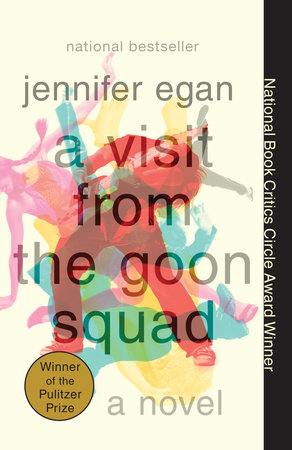
Category: Literary Fiction
- Share on Facebook
- Share on Tumblr
READERS GUIDE
Introduction, questions and topics for discussion.
1. A Visit from the Goon Squad shifts among various perspectives, voices, and time periods, and in one striking chapter (pp. 234–309), departs from conventional narrative entirely. What does the mixture of voices and narrative forms convey about the nature of experience and the creation of memories? Why has Egan arranged the stories out of chronological sequence?
2. In “A to B” Bosco unintentionally coins the phrase “Time’s a goon” (p. 127), used again by Bennie in “Pure Language” (p. 332). What does Bosco mean? What does Bennie mean? What does the author mean?
3. “Found Objects” and “The Gold Cure” include accounts of Sasha’s and Bennie’s therapy sessions. Sasha picks and chooses what she shares: “She did this for Coz’s protection and her own—they were writing a story of redemption, of fresh beginnings and second chances” (pp. 8–9). Bennie tries to adhere to a list of no-no’s his shrink has supplied (p. 24). What do the tone and the content of these sections suggest about the purpose and value of therapy? Do they provide a helpful perspective on the characters?
4. Lou makes his first appearance in “Ask Me If I Care” (pp. 39–58) as an unprincipled, highly successful businessman; “Safari” (pp. 59–83) provides an intimate, disturbing look at the way he treats his children and lover; and “You (Plural)” (pp. 84–91) presents him as a sick old man. What do his relationships with Rhea and Mindy have in common? To what extent do both women accept (and perhaps encourage) his abhorrent behavior, and why to they do so? Do the conversations between Lou and Rolph, and Rolph’s interactions with his sister and Mindy, prepare you for the tragedy that occurs almost twenty years later? What emotions does Lou’s afternoon in “You (Plural)” with Jocelyn and Rhea provoke? Is he basically the same person he was in the earlier chapters?
5. Why does Scotty decide to get in touch with Bennie? What strategies do each of them employ as they spar with each other? How does the past, including Scotty’s dominant role in the band and his marriage to Alice, the girl both men pursued, affect the balance of power? In what ways is Scotty’s belief that “one key ingredient of so-called experience is the delusional faith that it is unique and special, that those included in it are privileged and those excluded from it are missing out” (p. 98) confirmed at the meeting? Is their reunion in “Pure Language” a continuation of the pattern set when they were teenagers, or does it reflect changes in their fortunes as well as in the world around them?
6. Sasha’s troubled background comes to light in “Good-bye, My Love” (pp. 208–33). Do Ted’s recollections of her childhood explain Sasha’s behavior? To what extent is Sasha’s “catalog of woes” (p. 213) representative of her generation as a whole? How do Ted’s feelings about his career and wife color his reactions to Sasha? What does the flash-forward to “another day more than twenty years after this one” (p. 233) imply about the transitory moments in our lives?
7. Musicians, groupies, and entertainment executives and publicists figure prominently in A Visit from the Goon Squad . What do the careers and private lives of Bennie, Lou, and Scotty (“X’s and O’s”; “Pure Language”); Bosco and Stephanie (“A to B”); and Dolly (“Selling the General”) suggest about American culture and society over the decades? Discuss how specific details and cultural references (e.g., names of real people, bands, and venues) add authenticity to Egan’s fictional creations.
8. The chapters in this book can be read as stand-alone stories. How does this affect the reader’s engagement with individual characters and the events in their lives? Which characters or stories did you find the most compelling? By the end, does everything fall into place to form a satisfying storyline?
9. Read the quotation from Proust that Egan uses as an epigraph (p. ix). How do Proust’s observations apply to A Visit from the Goon Squad ? What impact do changing times and different contexts have on how the characters perceive and present themselves? Are the attitudes and actions of some characters more consistent than others’, and if so, why?
10. In a recent interview Egan said, “I think anyone who’s writing satirically about the future of America and life often looks prophetic. . . . I think we’re all part of a zeitgeist and we’re all listening to and absorbing the same things, consciously or unconsciously. . . .” ( Brooklyn Daily Eagle , February 8, 2010). Considering current social trends and political realities, including fears of war and environmental devastation, evaluate the future Egan envisions in “Pure Language” and “Great Rock and Roll Pauses.”
11. What does “Pure Language” have to say about authenticity in a technological and digital age? Would you view the response to Bennie, Alex, and Lulu’s marketing venture differently if the musician had been someone other than Scotty Hausmann and his slide guitar? Stop/Go (from “The Gold Cure”), for example? (For a complete list of available reading group guides, and to sign up for the Reading Group Center enewsletter, visit: www.readinggroupcenter.com.)
About this Author
Suggested reading, related books and guides.
Visit other sites in the Penguin Random House Network
Raise kids who love to read
Today's Top Books
Want to know what people are actually reading right now?
An online magazine for today’s home cook
Just for joining you’ll get personalized recommendations on your dashboard daily and features only for members.
Themes and Analysis
A visit from the goon squad, by jennifer egan.
In ‘A Visit from the Goon Squad,’ Jennifer Egan tries to explore the theme of time and how quickly it can flash before our eyes, often leaving us reminiscing about some good memories from the past or regretting having lived less than we planned to.
About the Book

Article written by Victor Onuorah
Degree in Journalism from University of Nigeria, Nsukka.
Throughout the book, readers will notice how time takes its toll on the majority of the leading characters – starting with the most frontal ones in Sasha Grady Blake and Bennie Salazar but also extending to Lou, Bosco, Jocelyn, Mindy, and the others. As the story progresses, more and more themes of aging, death, unrequited love, technology, and mental health, among others play out. This article will analyze the frontal themes from Jennifer Egan’s ‘ A Visit from the Goon Squad ’ and discuss the key moments, writing style, figurative expressions, and symbols therein.
A Visit from the Goon Squad Themes
Time passage.
More than just a theme but also a sort of character, time is arguably the biggest villain out to hunt all the characters in Jennifer Egan’s ‘ A Visit from the Goon Squad .’ From Sasha to Bennie – stretching down across to Scotty, Jocelyn, and all the other characters, the readers will find these characters, at one point or the other, lashing out and venting their frustrations on either the fact that time came flying past their hay days too quickly, or that it took a complete detour on them.
Mental Health
The issue of mental health among the youth is another vital thematic focus of Jennifer Egan her book, ‘ A Visit from the Goon Squad. ’ These issues seem to come as a direct or indirect consequence of the traumas of the time theme.
Nearly all the characters battle with mental health issues in their own time. Sasha struggles with kleptomania – while Bennie battles over impotence, loss of confidence, and self-esteem. Some – like Jocelyn – suffer devastating heartbeats, while others like Rob become self-destructive and lose their lives as a result.
Aging and Death
Aging, and eventually death, is the reason ‘ A Visit from the Goon Squad ’ characters have shared malice with the time character – as these themes are the strongest, most imposing, and most fearful instruments it has on humans. After wasting a significant part of her youth living by the edge as a punk rocker, she comes to the realization that she hasn’t really achieved any meaningful thing in her life, and age is not on her side.
Once this happens, she begins planning the remainder of her life for the better, first by going back to school, then seeing a therapist, and so on. A similar thing happens with all the other characters.
Infatuation, Love, and Unrequited Love
Incidental themes from the novel, these trios are typical for every book, film, or work of art that focuses on young adults. ‘ A Visit from the Goon Squad ’ isn’t different, as there’s no shortage of drama on these three fronts.
In the first three chapters, we see how Bennie and his clique are caught up in a bizarre love (or infatuation?) circle. Rhea wants Bennie, who wants Alice, who wants Scotty wants Jocelyn, who wants Lou. None seems to be loving another who loves them back, and this unrequited love, and hits devastatingly more on the character Jocelyn (and a bit on Rhea), who becomes miserable over Lou’s games. Thankfully she realizes later and attempts to fix her life.
New Media Technology
Technology, particularly social media, is at the center of things in ‘A Visit from the Goon Squad .’ This is written all over Part B, chapter 13 of the book, when Alex and Lulu work with Bennie to promote Scotty as a music brand to the world, and people actually bought it even with they not having prior knowledge of Scotty’s work or personality.
The Music Industry
The entire narrative of ‘ A Visit from the Goon Squad ’ is built around the music industry. All the characters know or have something to do with someone who knows about music, more specifically, punk rock music. As kids from the 70s, Bennie and his friends vibe to the trendy punk rock music of the era. However, for Bennie, it becomes much more than just a vibe but a passion; that’s why unlike the others, he pursues it as a career – learning everything about it: the best, the production, the music.
While the whole plot revolves around this genre of music, Bennie and his mentor Lou Kline seem to be the only two people who run a successful business out of it, selling the talents of people like Scotty and Bosco.
Key Moments in A Visit from the Goon Squad
- Sasha visits her therapist and recalls stealing a woman’s purse – and later – Alex’s wallet.
- Bennie goes to watch his band’s indoor performance – accompanied by Sasha and his son Christopher.
- It’s the 1970s, seventeen-year-olds Rhea and Jocelyn convince Lou to come to watch Bennie and his band – ‘The Flaming Dildos‘ – perform.
- Lou goes on a vacation on safari – accompanied by his family and girlfriend Mindy.
- Many years later, Lou is old, sick, and dying and is visited by old friends Rhea and Jocelyn (now forty-three-year-olds).
- Scott, who is leading a reclusive life as a lowlife janitor after his divorce and hiatus from music, visits old friend Bennie.
- Bennie moves to the affluent Crandale neighborhood with his wife, Stephanie, but they struggle to fit in.
- PR guru Dolly Peale, after her fall from fame, tries to rejuvenate her career by selling the genocidal General.
- Stephanie’s brother Jules Jones publishes his magazine piece about the assault incident with Kitty Jackson.
- Rob, Sasha and Drew’s friend drowns in the East River following a fit of mental health issues.
- Sasha’s Uncle Ted Holland tracks Sasha to Italy and convinces her to come home.
- Allison, Sasha’s daughter, shares her family experiences, her brother Lincoln’s struggle with autism, and her defeatist inclination.
- Alex and Lulu help Bennie promote Scotty’s concert on social media. The show is a success, and they make history together.
Style and Tone
Jennifer Egan’s writing style goes in tandem with her postmodernism inclination . She typically utilizes nonlinear plot-style narrative to lend as many eyes to her readers so that her work goes beyond being a mere subjective read but also a multi-perspective experience.
Her book, ‘ A Visit from the Goon Squad’ is a perfect depiction of just how composite the author’s writing can be. In this book made up of thirteen chapters – cut in parts A and B, like a phonograph disk, the readers will experience an abundant flush of backstories and foreshadowing, diverse points of view (in the first, second, and third person), and thirteen complete, single story knotted together at their tail end.
In terms of tone and mood of ‘ A Visit from the Goon Squad ,’ there are over a dozen of them extractible, and this is because every story is told by different characters based on their distinct mental and emotional state. However, the common tone and mood found in the book are mostly satirical and include; expressions of regret, shame, disappointment, failure, and hope.
Figurative Languages
Egan’s use of figurative language in ‘ A Visit from the Goon Sqaud ’ is thorough and starts well within the book’s title – which is a metaphor for being a merciless bully and tormentor of man.
Beyond the use of metaphors, there is also a wide usage of devices like satire, allusion, simile, personification, foreshadowing, and so on.
Analysis of Symbols in A Visit from the Goon Squad
Symbolism plays a major in Jennifer Egan’s ‘ A Visit from the Goon Sqaud ’ and so can be found at various important events of the book. Some of the most prominent ones have been explained.
Music is the heart of Egan’s ‘ A Visit from the Goon Squad ’ and it symbolizes an instrument of unity for all the characters across the different stories. Despite its changing nature, it still stands as the connector between Bennie and Sasha’s generation to that of Lulu and Alison’s.
This instrument, as seen deployed at strategic intervals by Egan, connotes different meanings at different points in the book. Sometimes it presents a glimmer of hope for what is to come – like in Ted and Sasha’s scene in her Italy apartment, while other times, it represents an event filled with dread and terror – like in the chapter where Sasha’s friend Rob dies.
Water’s symbolic depiction in ‘ A Visit from the Goon Sqaud ’ is unconventional – meaning that it is painted as harmful and destructive as opposed to the conventional literary connotation of being the source of life and tranquility. Rob drowns in the East River while swimming with Drew, Jocelyn visualizes drowning Lou when she and Rhea visit, and so on.
In ‘ A Visit from the Goon Squad ,’ pauses – especially in punk rock music – underpin the activities of time in relation to the characters throughout the book. From point to point, pauses progression of time in the life of these characters – detailing how much things have changed over time.
What are the primary themes in ‘ A Visit from the Goon Squad ’ by Jennifer Egan?
The story of ‘ A Visit from the Goon Squad ’ communicates lessons through several vital themes: from themes of mental health to time passage, and technology use in the punk music industry.
What figurative element is prevalent in ‘ Goon Squad ’?
Among a plethora of figurative elements used, the metaphor seems quite prevalent throughout the book and even exists in the book’s title to start with.
What narrative technique does Egan use in ‘ A Visit from the Goon Squad ’?
Egan uses multiple narrative styles for the book, ‘ A Visit from the Goon Squad. ’ Across the book’s thirteen chapters, the reader can find the first, second, and third-person perspectives.
What does sunset symbolize in ‘ Goon Squad’ ?
Sunset in ‘ Goon Squad ’ is like a gate that opens up a little of what is to come; sometimes it’s hopeful and optimistic, and other times it’s hopeless and grim.

About Victor Onuorah
Victor is as much a prolific writer as he is an avid reader. With a degree in Journalism, he goes around scouring literary storehouses and archives; picking up, dusting the dirt off, and leaving clean even the most crooked pieces of literature all with the skill of analysis.
Cite This Page
Onuorah, Victor " A Visit from the Goon Squad Themes and Analysis 📖 " Book Analysis , https://bookanalysis.com/jennifer-egan/a-visit-from-the-goon-squad/themes-analysis/ . Accessed 4 April 2024.
It'll change your perspective on books forever.
Discover 5 Secrets to the Greatest Literature
There was a problem reporting this post.
Block Member?
Please confirm you want to block this member.
You will no longer be able to:
- See blocked member's posts
- Mention this member in posts
- Invite this member to groups
Please allow a few minutes for this process to complete.
Advertisement
Supported by
Goon Squad Officer Is Sentenced to 20 Years in Mississippi Torture Cases
Six officers pleaded guilty last year to assaulting two Black men and shooting one of them in the mouth during a raid on their home.
- Share full article

By Nate Rosenfield , Jerry Mitchell and Brian Howey
Brian Howey and Nate Rosenfield are examining the power of sheriffs’ offices in Mississippi as part of The Times’s Local Investigations Fellowship . Jerry Mitchell is an investigative reporter who has examined civil rights-era cold murder cases in the state for more than 30 years.
Two former law enforcement officers who were part of a self-styled “Goon Squad” that tortured, sexually assaulted and beat residents of a Mississippi county were given hefty prison sentences on Tuesday for brutally attacking two Black men last year.
A federal judge ordered Hunter Elward, who shot one of the victims in the mouth, to serve 20 years in prison. Jeffrey Middleton, a former lieutenant who supervised the Goon Squad, was sentenced to nearly 18 years.
Mr. Elward broke down in tears as he turned to face Eddie Parker, 36, and Michael Jenkins, 33, and apologized for what he had done to them.
“I hate that I was involved in this,” he said. “I hate what’s happened to them.”
As Mr. Elward left the podium, Mr. Parker stood up and said that he forgave him.
Outside the courtroom, Mr. Jenkins, the man Mr. Elward shot in the face during what was described as a mock execution, said that he did not forgive Mr. Elward. “If he wouldn’t have gotten caught, he would still be doing the same thing,” Mr. Jenkins said.
Four other officers will face sentencing this week in the federal courthouse in Jackson. All of them pleaded guilty this summer to federal civil rights offenses related to their brutal treatment of Mr. Parker, Mr. Jenkins and a white man, Alan Schmidt, who was assaulted in a separate incident in December 2022.
So far, charges against officers in Rankin County have been narrowly focused on these two incidents, but residents in impoverished pockets of the county say that the sheriff’s department has routinely targeted them with similar levels of violence.
Last November, The New York Times and Mississippi Today published an investigation revealing that for nearly two decades, deputies in the Rankin County sheriff’s department, many of whom called themselves the Goon Squad, would barge into homes in the middle of the night, handcuff people and torture them for information or confessions.
In pursuit of drug arrests, the deputies rammed a stick down one man’s throat until he vomited, dripped molten metal onto another man’s skin and held people down and beat them until they were bloody and bruised, according to dozens of people who said they had witnessed or experienced the raids.
Many of those who said they had experienced violence filed lawsuits or formal complaints detailing their encounters. A few said they had contacted Sheriff Bryan Bailey of Rankin County directly, only to be ignored.
Sheriff Bailey, who has denied knowledge of the incidents, has faced calls to resign from local activists and the N.A.A.C.P. He has said that he will not step down.
The sheriff’s department in Rankin County, a suburban area just outside Jackson, came to national attention last year after five Rankin County deputies and a Richland police detective raided the home of Mr. Parker and his friend, Mr. Jenkins, following a tip about suspicious activity.
The officers handcuffed the men and tortured them by shocking them repeatedly with Tasers, beating them and sexually assaulting them with a sex toy. Mr. Elward put his gun into Mr. Jenkins’s mouth and shot him, shattering his jaw and nearly killing him.
“They tried to take my manhood away from me,” Mr. Jenkins said in a statement to the court on Tuesday morning. “I don’t ever think I’ll be the person I was.”
The officers destroyed evidence and, to justify the shooting, falsely claimed that Mr. Jenkins had pointed a BB gun at them, federal prosecutors said.
During the hearing on Tuesday, Mr. Elward said that he had witnessed brutal conduct by other deputies throughout his seven years at the department, which his lawyer, Joe Hollomon, said was “the culture of Rankin County sheriff’s department.”
During Mr. Middleton’s portion of the hearing, a federal prosecutor revealed that deputies under his supervision had carried commemorative coins printed with the words “Goon Squad.” Early versions of the coin had an image of a confederate flag on one side and a noose on the other, said the prosecutor, Erin Chalk.
She also said that deputies had repeatedly shocked Mr. Jenkins and Mr. Parker with their Tasers, as if they were playing “Taser hot potato,” competing to see who could inflict the most damage.
Mr. Middleton apologized to the victims and his community. “I have failed every law enforcement officer in the United States because my actions have tarnished the badge,” he said.
Judge Tom Lee of U.S. District Court chastised Mr. Middleton for not stopping the attack or taking responsibility for the actions of the men under his command.
“Mr. Middleton was not a mere bystander,” he said. “He’s the superior officer. He knew what was happening. He could have stopped it.”
Both Mr. Jenkins and Mr. Parker said they were satisfied with the sentences handed down by Judge Lee.
Over the next two days, the other officers involved in the incident, who each could be sentenced to a decade or more in prison, will appear in federal court in Jackson. Prosecutors are expected to detail the officers’ violent actions, and victims will have an opportunity to share their stories.
Two of the department’s deputies will also be sentenced for violently attacking Mr. Schmidt, 28.
Malcolm Holmes, a professor of criminal justice and sociology at the University of Wyoming, said that the Goon Squad case was “going to be one that finds its way into the chronicles of history.”
“There’s so much well-documented evidence that this is a pattern of behavior,” he said, noting that the case revealed “something we’ve covered up for a long time, particularly in rural America.”
The sentencing hearings this week are expected to reveal more details about violence perpetrated by Rankin County deputies, including what happened to Mr. Schmidt.
Got a confidential news tip?
The New York Times would like to hear from readers who want to share messages and materials with our journalists.
In an interview with The Times and Mississippi Today last week, Mr. Schmidt spoke publicly for the first time about what happened in December 2022 when a Rankin County deputy pulled him over for driving with an expired registration.
According to the federal indictment, the deputies Christian Dedmon, Hunter Elward and Daniel Opdyke arrived at the scene shortly afterward. Two other deputies, including the one who pulled Mr. Schmidt over, were also present throughout the arrest, Mr. Schmidt said; neither has been criminally charged.
Mr. Schmidt said the deputies had accused him of stealing tools from his boss, and then Mr. Dedmon pressed a gun to his head and fired it into the air before threatening to dump his body in the Pearl River.
“I thought this was it,” Mr. Schmidt said. “I’m never going to see my family again.”
Mr. Dedmon and the other deputies punched Mr. Schmidt and held his arm in a fire ant hill, then shocked him repeatedly with a Taser, Mr. Schmidt said.
Mr. Dedmon also pressed his genitals against Mr. Schmidt’s face and bare buttocks as he yelled for help and kicked at the deputy, Mr. Schmidt said.
“It still goes through my head constantly,” he said of the experience.
District Attorney Bubba Bramlett of Rankin County has begun to review and dismiss criminal cases that involved Goon Squad members, his office confirmed last week, but Mr. Bramlett declined to share details about the cases under review.
State lawmakers introduced a bill this year that would expand oversight of Mississippi law enforcement personnel, allowing the state board that certifies officers to investigate and revoke the licenses of officers accused of misconduct, regardless of whether they are criminally charged. Lawmakers have said that the Goon Squad and several other incidents of police misconduct in Mississippi helped prompt the bill.
The Mississippi House of Representatives overwhelmingly voted to pass the bill last week. The State Senate is expected to vote on the measure in the coming weeks.

A Visit from the Goon Squad
Jennifer egan, everything you need for every book you read..
Time and Memory
A Visit from the Goon Squad serves as an in depth exploration of the passage of time, the effects of aging on individual lives, and the longing for the past through memory. The novel’s title even speaks directly to the theme of time. Bosco , the former guitarist of The Conduits, who has become fat, alcoholic, and suicidal, states, “Time’s a goon, right?” Traditionally, a goon was an individual who inflicts fear and violence on…
Identity, Authenticity, and Meaning
The issue of identity is a prominent theme in A Visit from the Goon Squad , as Egan explores the extent to which identity is inherent and the ways in which it is assumed. The novel’s characters struggle to find meaning and authenticity in their lives, and they use different methods to discover, create, and escape their identities. The novel’s two primary characters, Sasha and Bennie , are two examples of characters that face challenges…
Connection, Disconnection, and Technology
The theme of Connection and Disconnection is finely balanced in Egan’s novel. Structurally, the novel highlights the way in which the characters’ lives are woven together. Characters from one story emerge in later stories as background characters, and background characters in some stories take center stage at other points in the novel. For example, the story “Ask Me if I Care” is narrated by Rhea and includes Jocelyn as a side character. Later in the…
Fame, Art, and Popular Culture
A Visit from the Goon Squad offers a strong critique of popular culture. Egan accomplishes this criticism primarily through her exploration of the music industry, but film, photography, and journalism are also investigated in her novel. Egan draws attention to the way in which trends come and go, and the effects of these cultural shifts. What is popular in one moment—for example, punk rock—is replaced by another trend soon after—such as overproduced pop music or…
Ruin and Redemption
The theme of ruin and redemption is present throughout Egan’s novel. This theme fits nicely alongside the novel’s other themes, as the characters find themselves crushed by time, by their self-centered and isolating ways of living, and by shifts in American culture. Throughout the novel, each of the major characters finds him- or herself at a low point. Sasha ’s story shows her slipping deeper into ruin as the result of her stealing, her isolation…

IMAGES
VIDEO
COMMENTS
A Visit from the Goon Squad first introduced Mindy, a beautiful 23-year-old anthropology student on safari with the much older record executive Lou Kline and some of his family and hangers-on. In ...
Jennifer Egan's 2010 "A Visit From the Goon Squad" was, depending whom you asked, a novel, or a collection, or a story cycle. But you could also call it a concept album. Following a tangle ...
This is, after all, a sequel to "A Visit From the Goon Squad," Egan's astonishing demonstration of literary bravado that swung through 2010, grabbing a Pulitzer Prize, a Los Angeles Times ...
In her typically inventive fashion, Jennifer Egan calls The Candy House, the follow-up to her Pulitzer Prize winner A Visit from the Goon Squad ... Then there is the reclusive Miranda Kline, the ...
Published March 31, 2022. When Jennifer Egan's novel A Visit From the Goon Squad was published in 2010, it was a sensation, sweeping up a basketful of awards and winning praise for its ...
We may earn commission from the links on this page. Fans of Jennifer Egan's breakout hit and Pulitzer Prize-winning 2010 novel A Visit from the Goon Squad will be thrilled to know that its "sibling novel," The Candy House, is here at last. The two books are connected loosely, like wildflowers sown in the same field.
There's not a lot of filler in Jennifer Egan's radiant new novel, The Candy House, a sequel of sorts to her 2010 Pulitzer-winning bestseller, A Visit From the Goon Squad. But one sentence in ...
Unsurprisingly, Kline deplores what her theory has wrought. Egan calls "The Candy House" a "companion novel" to her 2010 Pulitzer Prize-winning book, "A Visit From the Goon Squad.". While it's not necessary to have read the first to understand the second, it helps. In the earlier book, Bouton was a minor character; now 41, he is ...
A Visit from the Goon Squad first introduced Mindy, a beautiful 23-year-old anthropology student on safari with the much older record executive Lou Kline and some of his family and hangers-on. In her narration of the safari, she breaks down the group's reactions to her presence with deadpan, diagnostic precision: The "Structural Hatred" of an ...
The goon squad has paid another visit. Jennifer Egan's new novel, the itinerant offspring of her Pulitzer Prize-winning "A Visit From the Goon Squad" (2010), returns to the characters whose intertwined stories built the formally fragmented, wholly absorbing "Goon." "The Candy House," though, shifts the focus to their children, whose unconscious lives are threatened by the growing ...
Jennifer Egan's new book, "The Candy House," which she's called a "sibling novel" to her Pulitzer Prize-winning "A Visit From the Goon Squad," is a dizzying and dazzling work that ...
The Candy House is a 2022 novel written by Jennifer Egan.It was a New York Times bestseller and one of Barack Obama's top 10 books of 2022.The Candy House revisits characters and themes from Egan's Pulitzer Prize-winning novel A Visit From the Goon Squad (2010). Though knowledge of A Visit From the Goon Squad will help readers connect characters, The Candy House is a novel that can stand ...
As a novel set primarily in post-9/11 New York City, A Visit from the Goon Squad explores the way in which American culture has changed since the World Trade Center fell on September 11th, 2001. Many of the stories reference the absence of the twin towers, and several stories nod to the fear of future acts of terrorism, depicting the heightened state of surveillance Americans have experienced ...
After the critical and commercial triumph of 2010's A Visit From the Goon Squad, Egan may have been nagged by the same anxiety, but her new work of fiction should put those doubts to rest.
A Visit from the Goon Squad is a 2011 Pulitzer Prize-winning work of fiction by American author Jennifer Egan. The book is a set of thirteen interrelated stories with a large set of characters all connected to Bennie Salazar, a record company executive, and his assistant, Sasha. The book centers on the mostly self-destructive characters of ...
Stephanie 's brother, Jules is a frantic and neurotic journalist incarcerated for assaulting Kitty Jones after an interview. He spends time in prison, and moves in with Stephanie and Bennie after his release. He goes on to write a biography of Bosco titled "Conduit: A Rock and Roll Suicide.".
Egan's ' A Visit from the Goon Squad ' came in June 2010 as the author's fourth book after ' The Invisible Circus ,' ' Look at Me, ' and ' The Keep.'. The book took a non-conventional approach in the genre, narrative style, characters, and technique, exploring the passage of time (how time just never stops for anyone) - in ...
READERS GUIDE The questions, discussion topics, and suggestions for further reading that follow are designed to enhance your group's discussion of Jennifer Egan's stunning new work, A Visit from the Goon Squad. In a satirical and oddly touching book, Egan brings to life the recent past, captures the confusions and ambiguities of the present, and speculates about the future of America.
The issue of mental health among the youth is another vital thematic focus of Jennifer Egan her book, ' A Visit from the Goon Squad. ' These issues seem to come as a direct or indirect consequence of the traumas of the time theme. Nearly all the characters battle with mental health issues in their own time. Sasha struggles with kleptomania ...
A Visit from the Goon Squad Summary. A Visit from the Goon Squad is unconventional in the way its narrative unfolds. Each chapter stands as a self-contained story, but as a whole, the individual episodes create connections that form a cohesive narrative. The stories, as they appear in the novel, do not follow a traditional chronology.
Lou Kline Character Analysis. Lou Kline is a powerful and charismatic music producer who lives a decadent lifestyle that includes eating at fancy restaurants, doing cocaine, and seducing young women. Early in the novel, he has a relationship with a seventeen-year-old girl named Jocelyn. He has six children with a number of different wives.
We learn what became of his high school gang -- who thrived and who faltered -- and we encounter Lou Kline, Bennie's catastrophically careless mentor, along with the lovers and children left behind in the wake of Lou's far-flung sexual conquests and meteoric rise and fall. ... A Visit from the Goon Squad is a book about the interplay of time ...
Goon Squad Officer Is Sentenced to 20 Years in Mississippi Torture Cases. Six officers pleaded guilty last year to assaulting two Black men and shooting one of them in the mouth during a raid on ...
Time and Memory. A Visit from the Goon Squad serves as an in depth exploration of the passage of time, the effects of aging on individual lives, and the longing for the past through memory. The novel's title even speaks directly to the theme of time. Bosco, the former guitarist of The Conduits, who has become fat, alcoholic, and suicidal ...